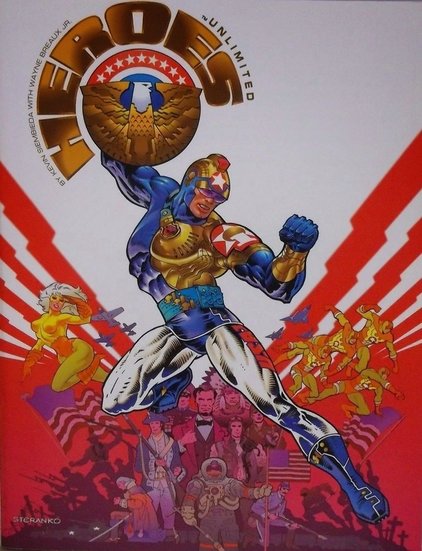 Who doesn’t love superheroes? Other than supervillains, that is. Can’t think of someone? Well that’s because supers are awesome. I’ll get to the point, I’m talking about Heroes Unlimited. The original was released in 1984 and since then hasn’t really had any different “editions” like other games, such as D&D. Sure, they released a couple of revisions but the last revision was released in 1998. Almost two decades ago. While I love all RPGs, Heroes Unlimited holds a special place in my heart, as it’s the first superhero based RPG I ever played. It’s right up there with D&D. That being said, not everything is perfect. More importantly, this article lets me break out some of my more marvelous superhero puns. 1). Badassery I was hoping I wouldn’t end up starting this like a teenager, but let’s face it; it’s freaking WICKED when you’re flying around shooting fire out of your hands at some jerk who wants to destroy the world or whatever. The feeling of almost being a celebrity while costumed in public is pretty snazzy too. While at the same time, you’re also a regular person! Yeah yeah, I know what you’re thinking: That's pretty much every… episode of Hannah Montana. But she doesn’t stop supervillains so, that's where the parallel stops, thankfully. Things like SDC (Structural Damage Capacity(Think badass healthbar(I love brackets,))) Flight and the minor powers really enhance the experience and just make you feel like… well, a super hero. Really though, this is just my personal tip of the hat to everyone involved in that. It’s a great work of art and an enjoyable game that I think will live on, and as I mentioned before, it holds a very special place in my heart. 2). Variety There are a lot, and I mean a lot of combinations to make in Heroes Unlimited. Not to mention there's three different books on even more super powers. Three! All of’em are 96 pages and add another 200 some powers to the already copious amounts of powers that came in the core book. You’ve got different categories for heroes such as Alien, Experiment, and Mutants (glad I’m not owned by Disney.) You can be anything. There’s so many ways to create a character, the variety blows most other games I’ve seen out of the water. Between stats, background, education, powers, categories for heros and personal flares, there's a cornucopia of options. Don’t even get me started on the little things they threw in such as insanity and phobias. 3). Adaptability Ever wanted to fight with the Fantastic Four? How about the X-Men? Avengers? Justice League? Teen Titans? Well, with a little planning and work on the GM’s part, it's relatively easy to play in the worlds of these famous groups. Even play these characters if you’re ballsy enough to desecrate the good names of these characters, you monster. Aside from my personal quarrels with my friend and his insistence to play *ahem* Wuce Brayne/Ratman and ruin the name of you-know-who, it’s a good flexing of those role-playing muscles to put yourself in the boots of these famous (and sometimes infamous) characters. The game isn’t reliant on these previously made worlds, though. With some imagination and some hardcore math, you can create your own worlds for your new or reused characters to run rampant in. Crafting a powerful enemy, a sidekick or even a different group of heros can be just as thrilling as it is time consuming. As with all tabletop games the intricacy is up to you. 4). Growth Let me just start by saying this point is more of a personal experience thing but, in my eyes, it has become a key part of every hero (or anti hero) I've played. As you level up, your powers grow as does everything else about your character (obviously), however the process of said growth is up for interpretation. I find this beautiful. Many of the characters I’ve played have grown in power and personality through many interesting processes. Occasional doses of (plot placed) radioactive waste, electrical charging and even just “supposedly” exponential power growth due to the “incident” and it's very nature. This makes every single character an ocean of possibility. However not everything is sunshine and roses, and the sky has it’s hawks as well as it’s doves... 1). MAAAAATH Holy crap-oli Batman, does this game have the crunch factor. For some, maybe that’s a good thing but when you’re even slightly unprepared, it slows down combat a lot. I mean a lot. Like throw in an extra hour at least. There’s so many different factors and ways to go about things it gets confusing. The pure math of it all is simply super. I had mentioned that the variety of this game was one of it's biggest beauties, but sometimes it’s a gargantuan pain in the ass. Sitting around for 20 minutes while someone tries to remember what the maximum SDC is and what sort of fancy counter they have is not only time-consuming, but brutal. The simple fact that there’s so many “math manholes” to fall into is proof that I should probably go back to the third grade. 2). Standards Every game has monsters and bad guys. It’d be hard to find a game that doesn’t have some sort of enemy character or class. Typically, these have stat blocks with basic outlines and a little bit of backstory to lessen the load on the GM. In this case, everything has to be whipped up by the GM. Even “beings of extraordinary power” such as demons and dragons don’t have official stats that I could find. There’s a very rough outline for a few things. They mention that Dragons would have supernatural strength (one of the major powers) as opposed to superhuman strength. Other than that, you have to make your own assumptions. Yet again one of the platforms most impressive feats is a curse as well as a blessing to the average player? 3). Time consuming Obviously with all this variety of character customization it’s going to take some time to pump out one of these bad boys. The amount of time it takes to make and really perfect the character you want is simply long. With other platforms you can make a developed character in about 2 hours. My first character in heroes unlimited took me 2 days. Worse yet, I couldn’t find and official character sheet for this stuff. From a GM’s perspective, it’s even worse. You have to pump out supervillains with memorability behind them, along with a plot based around the characters, other heroes, big places along with storylines. Then comes mapping, taking into account flight, assorted powers, making puzzles appropriate for everything and everyone. Really, the nature of this game is far too… difficult. There’s a lot to do. As with all things, there’s a right way and a wrong way to go about playing this game. If you want short, quick jolts of fun, this is not for you. If you’re ready to sit down, get invested and forget how many days ago you last showered as the pizza boxes and chinese food containers begin to block out the light, then this is your heaven. Jarod Lalonde is a young role-player and writer whose passion for both lead him here. He’s often sarcastic and has a +5 to insult. Dungeons and Dragons is his favorite platform. Although he’s not quite sure if it’s Call of Cthulhu whispering to him in the small hours of the night, or just persistent flashbacks to the Far Realm. 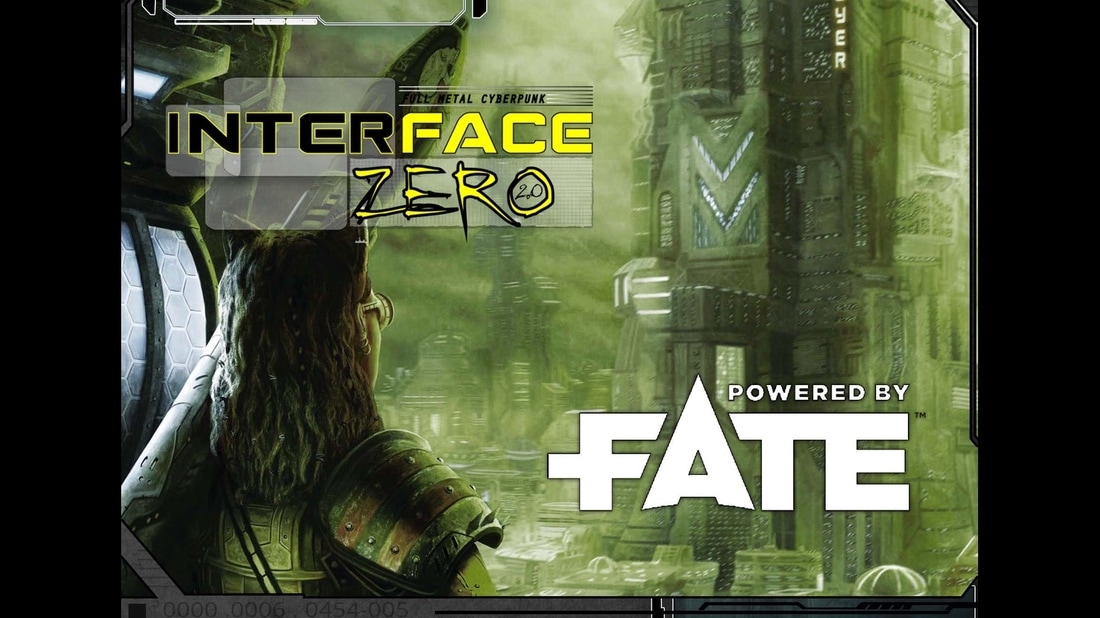 To say I love cyberpunk would be somewhat of an understatement. I mean, how could you not? I absolutely LOVE Star Trek, but there’s something that is too clean, too utopic in Rodenberry’s vision. Then in comes cyberpunk, stating that the future will be as good and as bad as today is, it’ll just have more rain, more neon and some of the cars will have the ability to fly. A while back, I ran a cyberpunk setting, under the Savage Worlds rule system, in the dirty, spiraling metropolis that is New Hades (www.welcometonewhades.blogspot.com) and this is where I came across the Interface Zero (IZ) setting. Published by Gun Metal Games, it has now been adapted to the Fate rule system, and this is where we pick up our story….. 1 – The Setting Almost 40% of the book is setting. This might seem overkill, but it doesn’t feel like it. Divided both chronologically and geographically, the book does an excellent job at introducing us to the IZ world. At the start of the book, a couple of pages are dedicated to a timeline, showing what happened to our planet in the years between the present and 2090. If one then wishes a more in depth study, the latter part of the book has the mentioned huge world history/atlas section, detailing the main countries/areas/players on the world stage. Is it too much? Perhaps, but by Cthulhu, it reads like a novel, and gives you the ability to base your players anywhere in the worlds, without it feeling same-y and boring. I won’t spoil it, but environmental catastrophes, diseases killing a not-insignificant part of humanity, cybernetics, robotics, space colonies, etc, etc. 2 – Gameplay As mentioned, it follows the Fate rule system, with everything that comes attached to it (flexibility, adaptability, etc.). It feels, however, that IZ has made a lot of effort to ‘pin things down.’ Whereas the Fate system itself is happy with letting the characters be as fantastic as you can make them, IZ seems to try to make them more centered, more focused. The Fate rules and fudge dice rolls are still there, but one gets a feeling that IZ characters are real, with real armor and real pistols and swords and real cyberware. 3 – The Characters This is where I feel this system shines. It doesn’t allow a free for all of character identities and creation, but it gives the players a huge number of possibilities of races and backgrounds, so varied, in fact, that I’m sure the possible permutations are in the hundreds. Just on race, you can chose Android (robot), Bioroid (synthetic human, think Ash from Alien), Cyborg, Human, Human 2.0 (biologically enhanced), Hybrid (human spliced with animal DNA) and Simulacrum (synthetic human). Each will of course have their advantages and disadvantages: a Hybrid with bat DNA might see in the dark, but might be denied access to polite society. Add to these races occupations as varied as bartender or bounty hunter and you have a huge scope to play around with. Furthermore, although it is mentioned they’re just guidelines, major and minor aspects are suggested, depending on your choices. This, I find, is the Fate system’s greatest strength but, especially for players unfamiliar with the rules, it can be a weakness. Allow me to explain. In Fate, your character has a number of short sentences that describe him/her/it, called Aspects. You call upon these aspects during gameplay for bonuses. My character is a thief, so I invoke my aspect ‘Best thief is my neighborhood’ for a bonus to lockpicking. Now this works amazingly, but for new players it can be tough. How do you pin down a character when your scope is infinite? IZ does a great job pinning this down. It might rob a tiny bit of flexibility, but it makes character creation faster and easier. 4 – Archetypes An inspired idea was the addition of archetypes: pre-made, almost ready to go characters, that can be copied off the page and used in a game almost immediately. I really enjoyed this, as it seemed to bridge the two types of Fate players, the ones that are happy with creating almost everything ‘bout their player from scratch, and the more casual players that only want the flexibility of the dice rolling and Aspects, and would prefer their characters to be more grounded. 5 – Rules The Fate rules are used almost to the letter, with minor alterations. A few pages are spent describing the system in detail, so you really only need this book to start playing immediately. Conclusion I really really like it. The setting is fantastic, the rules are straightforward and straight from the Fate Core, and the characters feel real and interesting. It looks like a system that is parallel to... say, Shadowrun, as in it has the same sort of dark futuristic setting, but attempts to be smoother, faster, yet equally engaging. If you like cyberpunk and want a fast, exciting system, look no further! Rui is a Portuguese scientist that, after ten years doing strange things in labs, decided to become a teacher. Then, two years ago, like he was bit by a radioactive D20, RPG’s came into his life, and he’s now juggling teaching, playing and GMing quite happily. He lives in the UK with his partner Joana, an ungodly number of potted plants, 4 to 5 RPG’s at various stages of completion (and across as many rule systems), and maps, cursed idols, evil necklaces, and any other props he can get his hands on. He’s been writing for HLG for a few months, and is one of the resident vloggers. He can be reached at @Atomic_RPG. 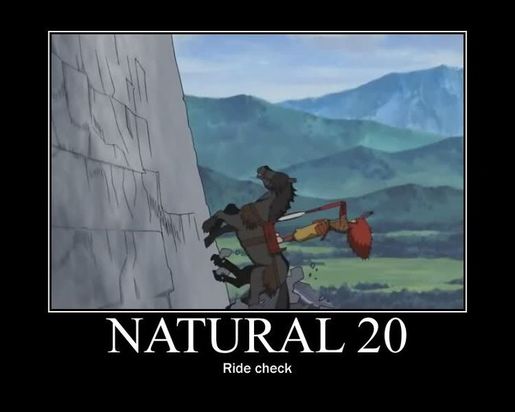 “Your sword is gone.” “WHAT?!?! What do you mean??” “It doesn’t exist anymore. You have no sword.” “But that was my +5 family heirloom sword! It cost me 50,000 GP and we spent four months in real time on a side quest to get it!!” “...and you put it in an annihilation portal trap. Tough.” “Don’t I get a saving throw?!? Or something??” WARNING! All of the mechanics I mention below are risky. This does not mean any of them are forbidden, nor even bad. Some of them are actually quite common. They are risky in the sense that they threaten to take the fun out of the game for some players. I wrote an article about some rewards that role-playing gamers want to get from their games, then another about some of the games that do a good job of providing these rewards. Now it’s time to talk about the games that will ruin your fun by taking these rewards away. Taking away or delaying game rewards means consequences for in-game actions start to affect the player as well as their character. Players often invest a lot of time and effort to get their characters to a particular stage, and these mechanics tend to negate that time and effort. To be fair, there is definitely an appropriate time to have your heirloom sword permanently removed, or for your character to die. Gamemasters and players often want to play a high-stakes game. Before you decide to apply a mechanic that could potentially undo or complicate the real-life work that players have put into the game you should talk about the risks, and decide as a group if having high-tension drama is worth suffering player-affecting consequences. I mention three joykill mechanics, but there are certainly more pit traps out there. If you think of any that I should have targeted, write them in the comments! I picked these three because they are typical of the worst reward-removing mechanics. Here is the list. 1. Bad Karma - TSR Marvel Super Heroes I’m really looking forward to playing Cyclops and being able to shoot around corners. Now, if I get karma every session and only spend half of it on having good rolls and don’t accidentally kill anyone or do anything out of character, I should be able to earn that stunt in…. oh, about two years of play time. The Marvel Super Heroes character advancement mechanic is a joykill. Which is a shame because I love the game! Character development is handled with Karma - save someone, beat the bad guy, or just do something awesome, and you receive Karma. Karma can be used to buy power stunts - cool things that your character can do with his/her powers. Brilliant! There are two problems with the Karma mechanic, though. The first is that Karma can also be used to buy successes in-game: to karate chop Magneto’s face or narrowly miss being mesmerized by Mysterio, spend Karma. This drains the resource that you would normally use for character advancement. The second problem; to successfully gain a power stunt, you need to succeed several times at different success levels; really cool, in theory. Unfortunately, in practice, it means that unless you have a prohibitive amount of Karma stored up in case you fail a roll, you could end up having wasted your Karma and starting back at square one. It’s important to separate character development resources (like Experience Points) and burnable assets in your game, because otherwise players risk burning up their hard work just so they don’t lose their character. 2. Dungeoneering Drain - Dungeons and Dragons “The vampire succeeds on a touch attack. You lose two levels.” “Noooo! I just got to level twelve! I really wanted to cast sixth-level spells!” “While you’re standing there, lamenting your fate, the vampire touches you again.” “Nooooooo!” There are more than three joykills in the grandaddy of all role-playing games (see the opening vignette about a 2nd edition AD&D scenario), though many of them have been ironed out in subsequent editions. Some of them persist. Try not to use them without warning the players. Rust Monsters: Given that new gear is one of the rewards that players who like Dungeons and Dragons crave, creating a monster whose sole purpose is to eat gear is risky. Whether gear is bought, found, or quested for, a rust monster can easily remove an irreplaceable reward from play. Experience Points for Effects: Just like with the bad Karma above, there are some mechanics in Dungeons and Dragons that require a player to spend the points they would normally use for character development to achieve certain effects (usually magical ones). This is done to maintain game balance; the effects that are bought with experience points are usually quite powerful. This is risky, though, because having a mage at 10th level when everyone else is at 12th can get tedious; character advancement is as rewarding as new gear, if not more. Level Drain: THE WORST!! Again, in a high-stakes game, level-draining creatures (often powerful undead) are specifically designed to hit the player where it hurts the most - in the experience points! Don’t pit yourselves against a vampire unless everyone is on board with the fact that they might lose a couple of levels before it’s all said and done… as if levels were the worst thing to lose. Which brings me to my next point: 3. The Ultimate Joykill - Character Death “I’m going to run across the rickety bridge that spans the chasm.” “Okay, roll for it.” “Natural one.” “Oh. Ouch. Um, make a reflex save.” “Uh… also one.” “Oh. Uh, I guess you fall screaming to your death.” “On the first day?” Something that is nearly invisible because it is assumed in most games, character death is a joykill mechanic. I may be opening myself to criticism, but I think allowing character death to be determined by the random rolling of dice is risky, and leads to a million absurdities from a storytelling perspective. What happens when your character’s goal was to deliver information vital to the success of a world-saving mission, and they get taken out by a couple of bandits who happened to roll really well? No, thank you. I applaud games like Mutants and Masterminds and Fate that deliberately remove character death from the mechanics. Characters can be ‘taken out:’ knocked out, captured, lost, or forgotten… but that just creates an interesting twist in the story. Fate takes it a step further, and allows players to decide when character death would be appropriate, thereby allowing the players and the GM, in conversation, to decide when to raise the stakes. It is essential to have conversations about when you are going to use high-stakes mechanics. High-tension drama is vital to role-playing games, and these mechanics can provide that when appropriate. Bust them out at the wrong time, though, and you will kill the fun for the players in your group. Landrew is a full-time educator, part-time art enthusiast. He applies his background in literature and fine arts to his favourite hobby (role-playing games) because the market for a background in the Fine Arts is very limited. He writes this blog on company time under a pseudonym. Long live the Corporation! 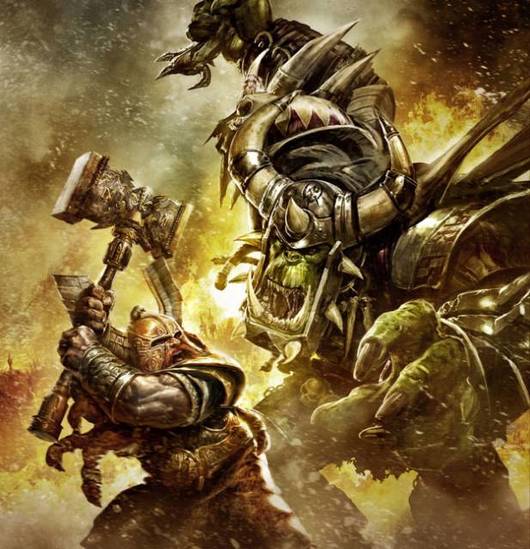 Rangers are one of the iconic fantasy archetypes, and they have been ever since we first noticed Strider sitting in the corner of the pub smoking his pipe. Though rangers get a variety of abilities, the one we always think of is favored enemy. And why wouldn't we? While the rest of the group is struggling against the undead minions of a necromancer, or the heavily armed orc warriors conducting local raids, the ranger is cutting through them like a scythe through chaff. And why not? A favored enemy bonus can often be what makes the difference between a challenging fight, and one that gets put down so hard it leaves a crater. One thing we do too often, though, is turn our rangers into vengeance-driven murder machines. Because, while it's true that killing off a character's family simplifies their back story, provides motivation, and explains why they're so good at fighting a certain type of creature, not every ranger needs to be guided by revenge. Instead you might find your favored enemy bonuses come from... #1: Experience Experience changes everything. Whenever you started doing a job, even if you were fully trained and qualified, there was a learning curve you had to deal with. Of course, if you survived, chances are you got really good at it. So, if your job has been, “fighting undead” for the last few years, it makes sense that you know how best to take them on. You know the tools to use, what signs to look for, and what sorts of strategies they use. You don't need any particular malice toward these creatures... they're just the opponents you cut your teeth on. #2: Training Not every ranger has gone toe-to-toe with his favored enemy in pitched battles for years on end. In fact, some rangers may rarely, if ever, actually see their favored enemies. They know what to do because they've researched, they've trained, and they've studied. A dragon hunter may never have fought a great wyrm, but he knows the signs to look for when that day comes. The environments they live in, the colors of their scales, and where to put an arrow or a spear to have the most devastating effect. #3: Talent Sometimes a character is just naturally good at something. Maybe he knows just the right ingredients to put together for a salad, or he can always sniff out the best location to make camp. For some rangers, fighting a favored enemy might just be in their blood. An ability to see a creature, watch it move, and to intuit the best way to counter its strengths might just come naturally to you. Time and experience will only put an edge on these abilities. #4: Insider Knowledge No one knows how to fight a certain creature type like other members of that creature type. Human rangers whose primary prey has been other humans, for example, know what they're up against. The same is true for half-orcs who've had to best their orc brethren, or elves who've had to pit themselves against other elves. There is no strangeness in a prey you know as intimately as yourself, and when the ability to surprise is taken away, it becomes a battle of skill and preparation. #5: Admiration Some rangers are experts on the best methods to fight certain types of creatures not because they hate them, but because they admire them. The power of magical beasts, the grace of a construct, or the sheer, alien beauty of aberrations can breed an obsession in someone intrigued by these things. While fear is something a ranger might experience in the moment, there's also respect, and a strange kind of intimacy between them and their favored enemies. Though these creatures might need to be fought and killed, there's a kind of nobility in the struggle for someone who has devoted their life to understanding these adversaries. For more great gaming articles, check out Neal F. Litherland's blog Improved Initiative! 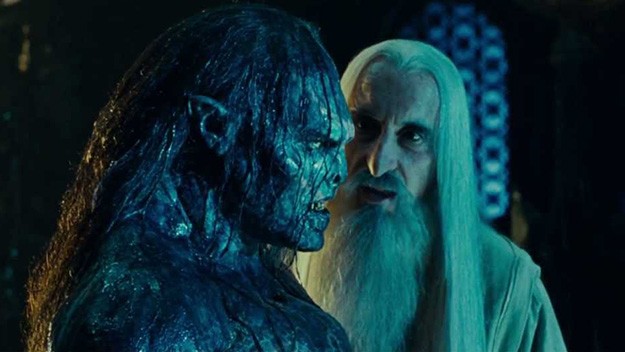 Do you wish you could recreate that original feeling players get when they encounter something "new" and "scary". From a PCs perspective, especially a veteran D&D player, there is not much that can beat that feeling. Well here are a handful of tweaked and modified enemies for you to throw at your experienced players to instil that raw feeling of awe when they meet new enemies that they have never seen before. I believe a fundamental reasoning behind modifying and homebrewing new monsters is to keep your sessions and campaigns “fresh” without ever feeling mundane. Even the most experienced players will start to tire of fighting basic orcs and goblins week in week out. It’s the insertion of a few unique or new monsters like the ones below that can really inject some excitement into your sessions as even your veteran players don’t fully know what to expect! 1). Blue-Orc Berserker I once was under the impression that all orcs love violence equally. I was mistaken. I've seen an Orc work up into such a frenzy his skin turns blue, and he revels with every bone he breaks, or every joint he shatters. Other orcs seem rather docile in comparison now. Blue-orcs are orc offspring that, while in the womb, are exposed to an excessive amount of hormones from their mother. When a pregnant orc is forced to defend her life with axe in hand, she goes through such an adrenaline rush that it changes the baby. The orc is born with blue-skin, and has an insatiable bloodlust and abnormally active adrenal gland. In battle, blue orcs go into a frenzy with multiple mace attacks. They don't care much about pain or fear. They only want blood. They will choose their target at the start of combat, and will relentlessly bombard them attacks, stopping at nothing to break every bone in their body. When bloodied (half hit points), a blue orc fights at its hardest, with powerful swings enough to smash stone and fell trees. 2). Swamp Troll I thought I had escaped the worst of the creature when I sidestepped it's tree-trunk club. That's when I heard a deep rumble coming from inside of it. I had no time to react to the acidic vomit spewing from its mouth. It destroyed my shield and damaged my armour. I tried to plunge my spear into his side, but the creature twisted and I impaled myself on a three-foot venomous barb sticking out from his elbow. My companions finished the creature off, and when the cleric found me where I lay, I was more dead than alive. Swamp trolls are hideous, disgusting, lumbering beasts who reek of vomit. They are covered in barbs, snot and pus. While they aren't the smartest of creatures, they have been favoured by evolution massively. They have a powerful form of regeneration, and venomous barbs located at their elbows, knees and running down their back. They are able to vomit at a whim, drenching anyone nearby in acidic bile straight from the beast's foul digestive system. They will eat pretty much any other creature they can, except for other trolls (can you blame them? Trolls taste awful!) In combat, Swamp trolls are ruthless brutes who use a mixture of hard-hitting clubs and disgusting sprays of vomit to defeat their foes. They usually fight the closest target first out of laziness, but if an enemy uses fire attacks, the troll will try and avoid that person. A group of trolls might, however, swarm a fire-wielding target in an attempt to overpower it. 3). Goblin Assassin Goblins have a short life expectancy. They mature, learn, and usually die very quickly. However, be wary of the goblin that lives for a long time. Their speed of learning does not slow down. A goblin who has learned to kill from the shadows can continue to do so, getting more and more deadly with each passing day. If a true Goblin Assassin ever has you in its sights, there is little you can do short of praying to the Gods. Goblin Assassins are extremely dangerous foes, who can kill enemies of all sizes with poisoned blades or deadly archery. They lurk in the shadows; waiting for the perfect time to go in for the kill. If a goblin assassin does not see a window of opportunity that they fancy, they will silently slink away, and kill another day. In combat, a goblin assassin will spend the first few rounds assessing the situation from a hiding point, before charging in on the weakest or most vulnerable member of the party. They will use their black daggers if they are protected by minions in a melee, but will otherwise be content to use their short bow from a distance. 4). Polarity Wraith It seems that some wraiths are not only masters of the incorporeal, but also have a domination over anything that isn't. It was quite an experience to witness the wraith using telekinesis to turn my own weapons deceiving me. Polarity wraiths are exceptionally powerful beings who can control corporeal creatures and objects with telekinesis. They can disarm opponents, push them around the battlefield, or pull them into a group of the wraith's allies. Polarity wraiths usually fight alongside other undead, but will sometimes strike a bargain with a devil or demon. In combat, a Polarity wraith stays just behind the frontline defence of their allied companions. They use their powers to manipulate the battlefield in their favour. They will either push their allies into advantageous positions, or push enemies into dangerous positions. They also enjoy possessing the weapons of a frontline fighter and using it to wreak havoc on the wraith’s enemies. 5). Necradai Skeletons In all my adventuring days as a Paladin, I have never seen an undead creature that could absorb radiant light. I was mortified when they proceeded to use that radiant power against me. Necradai skeletons are ancient beings from a culture that revere the sun as a god. They have a natural resistance to radiant power, as they absorb it into their enchanted helmets, armour, and blades. They can then use this power to enhance their own offensive capabilities. In combat, Necradai skeletons will often stand in the back of the fight, soaking up sunlight, if possible. They fight conservatively until they start absorbing radiant light. Once they have some power at their disposal, they will enchant their allies’ or own attacks to wreak some real havoc for the players. 6). Scythe Wraith There's a truly unsettling feeling that you get when death stares you in the face. You can feel its weight on your shoulders. You can feel your soul being weakened, as if it's preparing itself for when it is to be taken from you. Scythe wraiths are death seekers who prey upon the living with the intent to steal their soul. They will work for powerful undead masters, but also have been known to lurk freely in the dark places of the world. In combat, Scythe wraiths gang up on a single target, using their Mark of Death attacks to allow them to deal more and more damage to their targets. They prefer to pick targets who are isolated from their allies, and will be happy to phase through walls and other obstacles to reach this target. 7). Crypt Fiend I have never seen a ghoul so large before. It was well over ten feet tall, and it had claws like swords. I saw what they did to Grimhide; tore out his organs through his rib cage with one mighty swing of those claws. Crypt fiends are troll-sized ghouls, undead monstrosities that have dangerous claw attacks and a thirst for blood. In combat, Crypt Fiends tear their opponents apart with their huge claws. Many of them also enjoy skewering their target and bringing it to their mouth to bite into the raw flesh of their prey. Groups of crypt fiends will prefer to swarm a single target that is bleeding badly, as they tear their foe apart in a mindless rage of endless hunger. Peter is an avid dungeon master, role-player, and story teller. When he's not running homebrew campaigns, he is creating new worlds, or he is reading and writing fantasy stories, forever immersing himself in the gaping black-hole known as the fantasy genre.
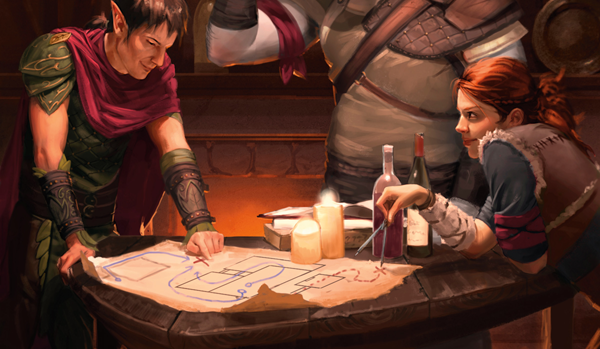 I recently introduced a girlfriend of mine to Pathfinder for the very first time. Not only was it her first time with Pathfinder, but also her very first pen-and-paper RPG. So far, she’s enjoying it, but the question of how to get more ladies involved in the gaming world is one that is frequently bubbling beneath the frothy surface of our subculture. I have DM’ed in the past, but I decided to approach this more from the perspective of a female player who wants to get her friends involved in the madness. Guys have frequently asked “how can I get my girlfriend/wife involved in role-playing?” and gamer girls frequently discuss this between ourselves, so I polled a few of my crew and came up with the following points. So a girl has expressed an interest in joining your group, or one of your crew has said that his ladyfriend/sister/roommate/platonic life partner has asked what precisely the hell it IS you do around a table at a friend’s place for ten hours on a Saturday night. Here’s what you can do to increase the chances that everyone involved will have a good time. 0- Point Zero: Make sure we know we are welcome and not just tolerated. We understand that with Gamergate and all the negativity that swirls around the Internet between the various gender factions, it can be a bit intimidating for a guy to invite a girl to a game, especially if he knows she’s likely to be the only one present at the table. When in doubt, let us know that a seat has our name on it, and let us take it from there. 1- Point One: Curate (in a non-hipster way) your gaming crew. A handy definition of curate: to pull together, sift through, and select for presentation. Take a good hard look at your players and think if they would be good for a new player or a new-to-the-group player. Do you have a bunch of hardcore lore-junkie grognards that are roughly as crunchy as a bowl of aquarium gravel and take great joy in nitpicking the rules to death and second-guessing the DM? Probably not the best group for a new player - and honestly, why do YOU play with people like that? Carrying on... Do you play with a group of stereotypes? Be honest here. Are they the basement-dwelling, Doritos-dusted neckbearded types who have the social awareness of a potato? Again, probably not the best group for a new player. That being said, our friends are our friends. It might be a good solid gaming group, but not the best fit for someone just getting into this facet of the hobby. Let’s say that you have some relatively well adjusted* gamers around your table, the type who indulge in hygiene and jobs and don’t break out in stammers and sweats when girls are around. Ideally, one or more of them will be in a relationship of some kind that involves a romantic component, so they are used to communication and compromise. This is a good place for a completely new player to come in - and even better if the one who invited the new player is actually excited about having her join. *Well adjusted = medium-to-high-functioning in the mundane aspects of day to day life. Can likely be trusted not to do to the wink wink nudge nudge type of inappropriate behavior until they understand where the lines are with the new player. Also not likely to see a new female face at the table and immediately assume that she is interested in an out-of-character entanglement - or an in-character one for that matter. Explain to your crew that you are going to be having a new player join the table, and give them the chance to possibly bow out for that session if they like. It goes without saying that it is rarely a good idea to introduce a complete neophyte to a well-oiled and functioning party past the first few games of a campaign, so perhaps you can add the new player at a natural break point or offer to invite her when you begin a new campaign. (Author’s note: You can also take the road traveled by my husband, which is: New player? Let me cram another game into my weekly schedule! I do not endorse this path, but perhaps you have learned how to practice chronomancy OR are in possession of a Time-Turner. If so, please contact me privately.) You, as a DM, and your players, as members of the community of gamers, owe it to new players and to the continuation of our shared hobby to give them a fair and welcoming chance to dip their toes in the ocean of tabletop gaming. New gamers are the lifeblood of the industry. 2- Point Two: Pick your setting carefully. For a first-time gamer, Pathfinder or D&D, with its hoary tomes trailing back into the Gygaxian caverns of yore, might be a touch intimidating. When in doubt, offer something with a good, well-known canon to draw from. My very first RPG was Star Wars - I didn’t even know that polyhedral dice existed, but I, like most kids of the late 70s/early 80s, knew about Darth Vader and the farmboy from Tattooine. When I introduced my friend to Pathfinder, she looked a little lost until she was able to identify and work among the classic literary high-fantasy tropes that are inherent to the system. After she found her reference point, she jumped in with both feet. This leads me into point three. 3- Point Three: Ask your new (and old!) players a TON of questions. What experience does she have? She may have never played Pathfinder, but she might have LARPed before, or played World of Warcraft or EVE or Skyrim, or she might write Harry Potter fanfic. Don’t make it seem like a job interview (because THOSE are fun) but explain that you are trying to figure out what her experience is, because you don’t want to waste her time with stuff she’s already familiar with. That shows respect for her time and her opinion, which will score you good-person points. Disclaimer: Most of my female friends are also my writer friends, which means we can spot tropes from a mile away. Sometimes this is irritating, but it also allows our DMs to use that knowledge both to our benefit and to his own nefarious ends. Your mileage will, of course, vary. Ask your players if there are any types of content they want to avoid. I’m not a huge fan of militaristic campaigns; some people don’t like Lovecraftian horror in their high fantasy, others might be perfectly fine with blood on the ceilings and torture by the hour, but can’t handle settings involving slavery or overtly sexual themes (think succubi/incubi or interrogation via seduction or the Book of Erotic Fantasy for D&D 3.5.) 4- Point Four: Don’t make assumptions. Some of my girlfriends are just as crunchy as the grognards, and that’s okay. I remember a friend of mine recently posting on Facebook that her half-elf barbarian just did 109 damage in one turn, to which one of her friends replied that her tiefling just gored a dwarf’s eyes out with her horns when he tried to put her in a headlock. One of the more experienced lady gamers I know loves to tell the story of back in the Dark Ages when she started to play, she would shock guys by sitting down at the table, opening her dice bag, and asking them what their THAC0 was. We might not have played the game, or might not have played that particular edition, but don’t assume we are completely uninformed unless we tell you we are. Ladies, it’s not a sign of weakness to admit you don’t know something, or to ask players to explain an unfamiliar acronym. It’s how you learn, after all. Guys: Comic Book Guy from The Simpsons is not a good role model. Don’t do it. Just don’t. Protip: Let the DM do the explaining, and only contribute as necessary. Otherwise, button your yaps. Oh, and because it needs saying: We don’t all want to play healers or druids. There, I said it. This is 2017, for the love of spice. We are all well beyond the stage of “hey we need a healer, get your girlfriend to play one”. If you need a healer, go get yourself right with your god(s), Father Cleric. 5- Point Five: Create a welcoming environment to play in. I’m not saying you need to go out and invest in doilies and tea cozies, but at least make the room presentable enough that you wouldn’t mind your sister or daughter seeing it. Alternatively, have your meet-and-greet/initial session at your local game store - everyone should be okay there. Bonus tip: if you ARE playing at your home, take ten minutes before the group arrives and tidy up a little bit. Nothing Martha Stewart, but rinsing stray hairs out of the sink and putting away your dirty socks will do wonders in making a good impression. The comfortable environment extends to the table as well. Asking a player (of any gender) what their character looks like is perfectly okay; extended discussion about what bra size the female characters wear is not. In all fairness, I have busted my female players about this as well when they get a little too...enthusiastic...about what the barbarian has under his kilt. 5.5- Point Five and a Half: Do NOT fall into the trap of female player = female character = oh look romantic/sexual plot point. Don't shoehorn that plot in just because you think we want it. Chances are, we don’t, especially with complete or near-complete strangers. It may evolve over time, but it might not. Let it happen organically or after discussion out-of-character. 6- Point Six: Be an adult. Treat people decently, regardless of gender. Remember, we are all representatives of our shared hobby and one bad experience will travel the winds much further than a fantastic one. We ladies don’t need to be treated with kid gloves - we need to be treated like valued members of the community. Call out bad behavior wherever you see it. Ask if there are misunderstandings, and strive to fix them. Do a post-mortem with each player and a separate one with the group - see if there are any areas of concern or room for improvement or anything that was really amazing that people want to see more. Understand that it will likely take several sessions for a group to really gel and learn to trust each other, and ask your players to give each other a chance. Ladies, gentlemen, and smizmars, the people you play with are human (presumably) and they WILL make mistakes, misspeak, or occasionally say inappropriate things out of ignorance. Don't ascribe malice to something that can be written off as ignorance or human error. If something bothers you, say something - but keep in mind that the best resolution should, as a rule, allow all parties to keep playing. If you as a lady gamer don't want to be treated like a fine crystal vial full of nitroglycerin, show your tolerance and willingness to make friends to the guys inviting you to the table. Guys, treat us like people, because we are people. Normal people...or as normal as gamers get. In the end, it's all just a game. Let us hope the Lady* is on our side. In loving memory of Sir Terry Pratchett, taken from us two years ago and twenty years too soon, Georgia * "The Lady", also known as; "She-who-shall-not-be-named, The 'Million-to-One' Chance (and all of the other chances as well) The One who will desert you when you need Her the most - and sometimes She might not..." is none other than the Anthropomorphic personification of Luck, as well as the single most powerful goddess on the Discworld, all for the simple reason that (although She has no worshippers and the only temple ever erected to Her was destroyed purely by chance) everybody hopes and prays that She exists and that She'll smile on them. Her suitors can be distinguished by their distinctive repetitive prayer; "please-oh-please-oh-please-oh-please." #speakhisname #gnuTerryPratchett 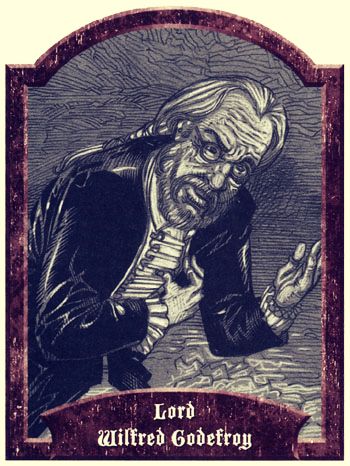 Greetings again, traveller! It's been too long since we've had occasion to meet face-to-face. Mordent has become very tense of late--I have the feeling that Lord Godefroy is plotting something particularly savage. You'll recall Lord Godefroy: the premier restless dead within the realm, a master manipulator of events both near and far, and a particularly vile combination of elitist and sadist. If you weren't aware, Godefroy appears to be the principal resident, or 'Darklord' if you prefer, within Mordent. It is his history and character which shape the realm, a realm which answers to him in almost every way, while at the same time defying his ultimate ends. Godefroy is, at the end of the day, a bitter old man incapable of finding anyone worthy of taking on his legacy. Now the country is filled with commoners and peasantfolk, the noble families long passed away. No peasant, no matter how wise or judicious, will ever be good enough for Godefroy, of course. While the surviving Weathermays would be the natural choice, they are all avid monster hunters, and would give Godefroy the fight of his unlife if they became aware of his machinations. It would seem at first blush that he has little option beyond them. However, not all of the noble families are as extinct as it might appear. A few survivors escaped either the destruction of their kin, or the realm. As Jules Weathermay grows increasingly older, and Godefroy's options diminish, there must eventually come a time when rulership of Mordent passes to someone. Godefroy will undoubtedly choose the least repugnant option from his limited selection and endeavor to manipulate them into governance. To that end, I thought it might be beneficial to discuss what options have presented themselves so far. 1- Aubrecker It is strange that Vilhelm von Aubrecker never considered looking for illegitimate children issued by his son, Rudolph. The boy's carousing was legendary before his disappearance, and where one finds a lust-driven noble boy, one usually finds bastard children just around the corner. Fortunately, it only took a small amount of digging to unearth Stefan Clairemont: the son of a merchant noblewoman from Dementlieu (known for a rather egregious wild streak in her youth, and known to have attended several social events with the younger von Aubrecker during their teens). His parentage is not something which is often brought up, but which is painfully obvious: if he were ever to meet the boy, Vilhelm would recognize him as his grandson at once. It might come to pass that the best option for Godefroy is to infuse his realm with noble blood from another land. Although many nearby realms have 'noble' families scarcely worthy of the name, the von Aubreckers are distinguished enough that Godefroy can respect them, and an expatriate scion is even better, since he is certainly free of any familial influence. Stefan Clairemont is nice enough to converse with, if a bit dull and unimaginative, with no great ambitions beyond marrying well, investing his family fortunes with the help of sound financial counsel, and enjoying local art. He would make a wonderful tool for Godefroy to manipulate. Dread Possibility: Clairemont has only recently come under the sway of his older brother Rudolph. Although Godefroy is aware of Dominic's struggle with another mental manipulator, the old specter isn't as familiar with the Brain's handiwork, and wouldn't recognize the signs of it in Clairemont. This might give the Brain an alternate outlet to attempt to manipulate, and either a new place to call home, or a source of additional reinforcements for his battles with d'Honaire. 2- Halloway Aimee Mainrouge is a wealthy aristocrat from Dementlieu. She comes from money, and has never wanted for anything save for entertainment. Fortunately gifted with an athletic physique and a natural grace, Aimee has found great success at fencing. She frequently chooses to fight duels on behalf of other young women in Dementlieuse society, with her striking good looks belying her skill with a blade. Unfortunately, Aimee has no true altruism behind her actions, she merely enjoys the violence as well as the praise that comes with being a 'hero.' Recently, when her father passed away, Aimee discovered a trunk amidst his possessions containing a number of family heirlooms. Among them are several artifacts, including a signet ring and a docket of lineage showing that her ancestry can be traced to the Halloways of Mordent. She has been considering a return to 'her homeland.' If her family history were discovered by Godefroy, she would make an interesting candidate. Her gender is not what he would prefer, but any noble is better than no noble as far as the old man is concerned. Dread Possibility: Aimee Mainrouge is a victim of a long-forgotten con. She is not a Halloway at all, just the great-great-great-great-great-great-great-granddaughter of an enterprising fence with a surplus of stolen art and a gift for forgery. His claim to distant nobility enabled him to establish himself as a wealthy merchant, and he maintained the tools of his deception should he ever need them. Sometime within the past 200 years, the truth was lost to the family. Although Aimee is the only living member of the Mainrouge line, Godefroy may very well decide that a counterfeit Halloway is an acceptable temporary substitute for a real noble to rule Mordent. 3- Mournesworth Just north along the coast from Mordentshire sits the small coastal town of Drifthome. The mayor of this village is an outlander by the name of Joram Fallstar, a retired adventurer who has only recently discovered the truth about his ancestry. After many battles with the evils of the Mists, Joram came to wed a witch. Along with his adopted child, they retired to the village which he had come to call home. During his last adventure, he discovered with the aid of an artifact known as the Tome of the Compact that his parents had fled the Mists centuries before through means unknown, changing their name from Mournesworth to Fallstar to escape persecution in a strange land. Joram believes strongly in law and order, and would accept rulership of Mordent if forced, but would prefer not to. He knows full well the extent of Godefroy's power, and wishes nothing to do with the ancient spirit. Dread Possibility: Godefroy knows the truth about Joram's wife: she is not entirely human, but is instead a merwoman whom exchanged a portion of her soul to stay on land with her love. Joram himself might be acceptable to Godefroy, but accepting the Mournesworth would mean giving legitimacy to his children, one of whom would eventually inherit the regency of the land. Since Joram's eldest child is an adopted Falkovnian, while his younger, natural born child is equally repulsive in Godefroy's eyes: the boy isn't even fully human, his mother's foul sea-creature blood tainting him beyond Godefroy's ability to stomach. 4- Blackburn-Bruce Of all the families, the Blackburn-Bruces are the one family that absolutely survived their 'destruction.' Numerous heirs have cropped up over the years, only to be usually connected with some diabolic sorcery. While I scarcely would have believed such a thing, I was with Joram when he discovered the Tome of the Compact, a book which appears as gibberish to anyone not descended from one of the noble families of Mordent. To my amazement, I could read it as well! My father-in-law, a historian of rural folklore and a font of lost information, believes strongly that my sister and I descended from one of the scions of the Blackburn-Bruce. Although this information has been whispered about since then, I've been fortunate that the citizens of Carrinford-Halldon continue to accept me as mayor, my family's dark legacy not sufficient to sway them against me. I've no interest in becoming Godefroy's catspaw, of course! Both myself and Gwendolyn are ever-vigilant against incursions from the restless dead, lest the old man come for me or one of my children. Dread Possibility: Before she was Lady Drakeson, Gwendolyn was known as Gwendolyn Timothy, a surname whose significance is not lost on Godefroy. The old man has no interest in allowing Nathan Timothy's daughter or extended family a foothold within his realm. Even if he were able to look past the lycanthropy that runs in the family--and which Gwen has infected her husband with--he cannot overlook the family's loyalty to their patriarch, and especially cannot overlook Frankie Drakeson's coarse and vulgar nature, closer in demeanor to the citizens of Verbrek than the the men of power in Mordent. Conclusion Whatever Wilfred's got up his ectoplasmic sleeve, it's going to be unpleasant for someone. Whichever one of these unlucky sods he targets is going to be in for the fight of their lives. Once Godefroy sets his sights on something, it's almost impossible to shake him off. Even if you want nothing to do with the coming fight, I would be remiss if I didn't insist on hosting you here in Carinford-Halldon again. If you can stay a few weeks or even days, that would be delightful, but even if you can only spare us a single night, we'd love to have you for dinner. Safe travels and happy hunting, Frankie Drakeson, Lord Mayor of Carinford-Halldon. Jim Stearns is a deranged hermit from the swamps of Southern Illinois. In addition to writing for the Black Library, he puts pen to paper for High Level Games and Keep on the Heathlands. His mad scribblings can frequently be found in Quoth the Raven, as well as anthologies like Fitting In or Selfies from the End of the World, by Mad Scientist Journal. Follow him on Twitter @jcstearnswriter. 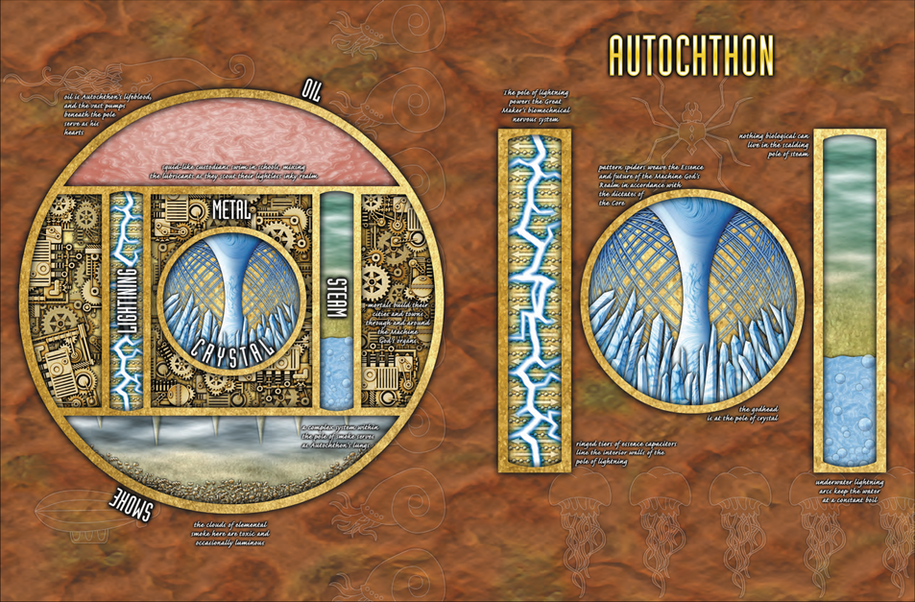 The concept of Autochthonia in the World of Darkness was first introduced for Iteration-X. Void Engineers discovered a machine planet on the opposite side of Earth’s orbit of the Sun. The Computer, an Artificial Intelligence that is guiding Iteration-X, is based there and a powerful element within the Convention wants to live in communion with The Computer and Autochthonia. The story goes: The Computer is a spirit inhabiting the physical computer, and since It-X has no capacity for Dimensional Science, they fail to realize this. I think this is an interesting story hook, and it's one I’ve always wanted to use in a Technocracy game. Iteration-X and the Void Engineers are my two favorite Conventions, hands down. A side note, this concept of an Alternative Earth on the other side of the Sun comes to us from the Greek philosopher Philolaus who hypothesized the presence of an Antichthon (Counter-Earth) which has been used in various works of speculative fiction over the years. It’s a pretty simple, yet engaging concept. In Exalted, Autochthon and Gaia side with the Gods during the Primordial War. Autochthon is the being that created Exaltation. He ultimately leaves Creation and takes hundreds of thousands of human beings with him, to help control the processes of his body. The Alchemical Exalted and the Autochthonians are forced to return to Creation because their Godworld is dying. I bring this up because it creates a ton of cool ways to make Autochthonia in Mage even more interesting than it already is. 1) Alchemical Ascension: In a previous article, I talked about the possibility of using Sidereal Exalted as the source of Avatars in Mage. Their control over Fate is similar in many ways to Mage. However, what if Avatars are instead a creation of Autochthon? For this plotline, the Age of Exalted ends with the Death of Autochthon. His Alchemical Exalted escape to Creation, attempt to save him, but they fail. Moments before his death, Autochthon briefly reawakens and puts into place his last protocol. He creates a method by which he could be reborn. He recalls and absorbs all his Exalted, then splinters himself into a seemingly infinite amount of soul shard/Avatars. He plans for these Avatars to survive the dark times approaching and to work toward the inevitable rise of science, reason, and technology to restore him to life. Control is the combined Avatars of 10 powerful Aspects of Autochthon himself, who are close to enacting their plan: the death of Gaia and the rebirth of Autochthon on Earth. 2) The Computer Is the Wraith of Autochthon: Imagine, if you will, that the Malfeans are the lasting essences of the dead Primordials. This is one of the plotlines from Exalted, and it fits perfectly with Wraith: The Oblivion’s unanswered questions on who or what these beings are. Now, one of the plotlines in Exalted: The Autochthonians is, if Autochthon dies, does he join the ranks of his fellows whom he plotted against and killed, or do they trap him in some form of eternal torment? This plotline requires that Autochthon has some method of keeping himself separate from the other Malfeans, after his death. He retains control over his Spectre, perhaps, and has been plotting a way to escape the Underworld and possess his body. The Mage books posit the idea that The Computer is not a true AI, but instead is a Spirit. Instead of an Umbral spirit, what if it is possessed by Autochthon’s Wraith? He would be a planet sized, mechanical Risen. What does this mean for Iteration-X? Maybe nothing bad, but… what if Autochthon didn’t have as much control over his Spectre as he thought? 3) Autochthon Never Died: The Alchemical Exalted succeed. They find a way to bring more souls into the world of their Machine God, and they save him. He continues to slumber, but he does not die. Thousands and thousands of years pass, and the Machine God begins to transform from a contained flat world into a sphere orbiting an external Sun. Internally, the Humans and Alchemical Exalted within Autochthon notice no changes. Until the Machine God, once more, begins to run out of resources and therefore starts dying from a form of starvation. Unlike eons before, Autochthon has moved far from Creation/Gaia/Earth in the Void and the method previously used to invade Creation is impossible. Brave Autochthonians find a way to send an emissary to Earth, an early Craftmason or some form of Artificer perhaps? Over thousands of years, these Autochthonians infiltrate society and lead humanity to finally find the body of Autochthon in the Void. The leader of the Void Engineers, Tychoides, is himself an Alchemical Exalted, who has been working to return home. Yet, he is tainted and not allowed to return. These are just a few story hooks I thought might make sense. I’m sure you might have others, or think my ideas are terrible. Tell me what you think and if you think you’d use these. With 17 years of playing rpgs, Josh started with Mind's Eye Theater LARPs and loves the World of Darkness. He recently launched,www.keepontheheathlands.com to support his gaming projects. Josh is the administrator of the Inclusive Gaming Network on Facebook. He’s a player in Underground Theatre’s and One World By Nights Vampire LARPs and is running both a Mage game and a Dark Ages: Vampire game. He’s a serious advocate for inclusive gaming spaces, a father, and a recent graduate from the International Peace and Conflict Resolution graduate program at American University in Washington, D.C. 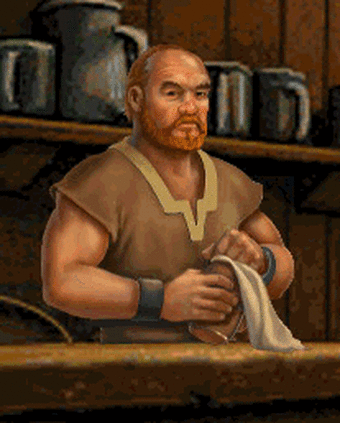 Accents were the first way I learned to differentiate my NPCs. My Scottish barkeep was a hit! Unfortunately all my barkeeps were Scottish for a very long time. So were all my Dwarves. Stereotypical accent reliance be gone! Here are five vocal and speech dynamics to build character and differentiate NPCs, even those who share the same cultural upbringing. Use these tips to not only shake up your voice options, but to communicate the world view and personalities of your characters. 1. Word Choice / Sentence Structure World view differences have a huge bearing on word choices. What does it say about a character who always uses words like "interpersonal conflict", instead of a words like "argument", or "row?" How lengthy are their sentences or thoughts? Try on "Given the absence of any evidence to the contrary, and that there are no other persons with plausible motives, I expect you'll find it reasonable for me to bring you in for questioning," or "You're the only suspect. You'd best come quietly." How a character speaks is related to how a character thinks. They might be curt, direct, and to the point. They might view a character as beneath them, and use long sentences, multiple clauses, and big words to accentuate differences in education or perceived intelligence. 2. Pitch & Melody Where does the character’s speaking voice sit in pitch, compared to yours? Simply picking higher or lower pitched voices can start to differentiate a character, and is a quick and dirty way to offer clues about gender and age. We can deepen the understanding of a character by imagining what range of pitches they use in their average speaking voice. Do they have a Clint Eastwood monotone, or a a Maria von Trapp sing song vast speaking range? This can tell us a lot about what a character thinks about the world, and how safe they are to express themselves emotionally. Guarded characters will guard their pitch range. Do they have a repetitive melody in their voice? They may have an upward inflection at the end of most sentences. If they sound like every time they make a statement, it comes across as a question, we are communicating something about their confidence. In my family, all of the older generation have a very peculiar rainbow pattern to their speech. Every sentences starts in mid range, arcs into a higher pitch, then finishes down on a low note. Once I first heard it I couldn't unhear how regularly they all do it. One can really get a sense of those old farm kids’ earthiness when hearing them chat about the weather and hockey with the same 5 note melody to every statement. A character skilled in rhetoric may use many more variations in melody and pitch as they alternate between threatening, cajoling, and flattering your characters. 3. Pacing The pacing of someone's speech is a huge clue to their personality. Do they feel they have the time and attention of their audience to reveal their thoughts over time? Do they feel no one is really listening so they spit everything out without breath to make sure they are heard before they are interrupted? Very rapid speech could indicate a busy person with no time for anything but action, or nervousness. Slow speech could indicate someone perfectly comfortable in their environment who feels entirely unthreatened, or someone who has difficulty coming up with the right words. Try varying the tempo of speech to reveal different traits. 4. Silences And Filler Words Do you have that friend who when asked a question, makes no immediate vocal response, and you can’t tell if they are thinking about a response, haven’t heard you, or are ignoring you? A character who is comfortable letting silences hang is very different than one who fills gaps immediately with “umms,” “uuhs,” and “well…” What sort of filler words might your NPCs use when they don’t have the exact turn of phrase they are looking for? Is their speech littered with “like,” or do they finish every list with “ and stuff like that?” 5. Aperture or Mouth Tension Try speaking a few lines (or reading part of this article aloud) two times. The first time, keep your teeth firmly together. The second time, imagine having a pencil oriented vertical inside your mouth wedging your jaws as open as possible, and speak while keeping this openness as much as you can. There are two things I am hoping you’ll notice. First, the voices sound different. The quality of your vowels will be greatly affected by the openness of your mouth. Second, it feels different emotionally to speak these two different ways. The tension of keeping your teeth together produces a tension in character, a grittiness. The looseness of the open aperture recommends itself to a more open minded, or curious type of character, or one well versed in the flexibility of mind required to be a master manipulator. Let’s imagine two brothers. One brother is a golden boy: gets great grades and is optimistic about the world. The other is in his shadow, constantly fighting for attention. We’ll make the first brother’s voice have an easy pacing, and a relaxed melodic tune. He uses lengthy composite sentences (to show off his facility with language), and usually ends on a firm and confident low/middle note, a tonic. The second brother’s voice is spoken with a tight mouth, pitched higher but with less modulation in tone. He speaks louder than is appropriate for the context, in simple short sentences, but with lots of thoughts in a row. He speaks quickly without taking breaths: "and this, and this, and this..." He usually has to be interrupted instead of finishing thoughts on his own. He inflects upwards at the end of sentences as if statements are actually questions. Here you have two totally different characters, with very different voices, but with the very same heritage and the very same accent. Darren has a background in theatre performance, and if he’s not exactly aiming for the Tony’s anymore, he’s delighted to strut the boards as often as possible at the gaming table. He makes his home in Edmonton, Alberta with his encouraging wife and their tiny thunder Goddess. Find him on twitter @dsteelegm 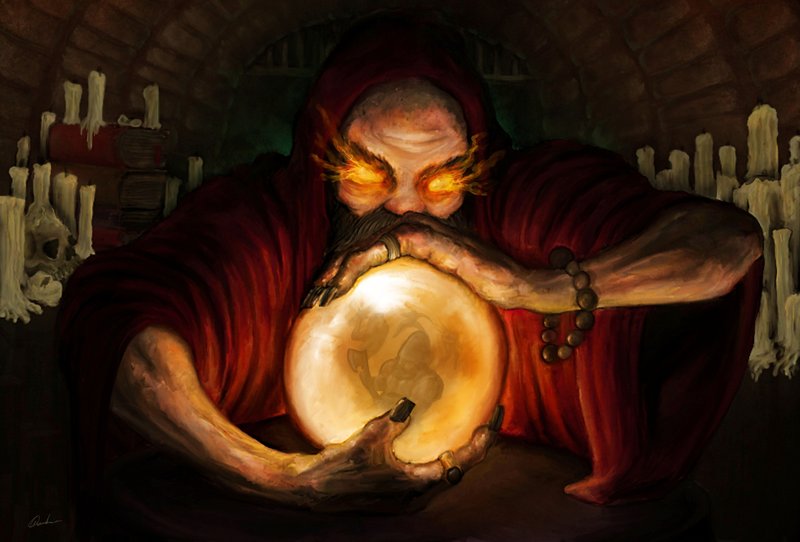 Thanks to the plethora of Spider-Man films and the many incarnations of Uncle Ben, we’re all very aware that “with great power comes great responsibility.” What we may not immediately realize is that this statement applies quite well to the role of GM in table-top RPGs. For those of us who’ve been running games for longer than we’ve been cashing paychecks, and especially for those new to the hot seat, I present to you the best ways you can exercise your deific power for the benefit of your players and your story. 1 . Fudging the Dice We begin with a controversial practice that, in many minds, is the equivalent of cheating. While that viewpoint has merit, I believe it is worth discussing the benefits of occasionally “miscalculating” the results of a dice roll to help the story move along or prevent meaningless player character demise. For example, should a player who’s new to the RPG scene roll up their first character, spend a good amount of time developing backstory and growing attached, only to have a stray arrow strike take them out of the action (or worse, kill them outright), it may not be best to let the dice fall as they may. Perhaps a last minute act of heroism from another player prevents the deathly consequence, or the arrow narrowly misses the new hero’s vital organs and simply wounds them. There are other examples, naturally, of situations in which the GM may decide to misread their dice. While this should never become a trend (the rules of the game must, at the end of the day, be respected), I believe a good Game Master puts the story and players before the randomness of the dice. Keep this tactic in your back pocket, and exercise with caution. 2 . Introducing an Ally The investigators dig through the hall of records to no avail, and are quickly running out of options. With the date of the vile summoning fast approaching, the player begin to despair. Luckily, a friendly face pulls them aside and indicates that they’ve noticed that the group has been trying to stop the Cult of the Faceless One, and they’re willing to provide some key facts in return for the safety the group can offer. In this example, the players were struggling to complete the adventure, be it by the taciturn nature of the dice or unforeseen roadblocks. The GM brings in a ringer, an NPC who can help them complete one of their objectives and thus move the story forward. The greatest drawback to this method is the fine line that the GM must walk between mild, believable assistance and Deus Ex Machina. Still, introducing an interesting NPC who can help the party but also provide their own intriguing complexity to the story can be a great way to provide subtle assistance to a beleaguered party. 3 . Refreshing the Points Many games provide certain expendable points that allow players some measure of control over the random chance generated by the dice. Whether they be called fate points, fatigue points, essence, or otherwise, their use helps make the players feel more heroic and in charge of their own destiny. When the going gets tough, expect the players to start running low on these helpful pips. Don’t feel bad about giving them more when they need them most. There is, as always, a balancing act to be performed here, but you can always come up with a good reason to provide a few more points during the biggest challenges of your game. Perhaps the players are reinvigorated by their heroic exertions, they receive a second wind, or fate smiles upon them that auspicious day. This simple “recharge” can help the players not only accomplish their lofty goals, but do so with dramatic flair in the most harrowing of moments. 4 . Taking a Step Back Oftentimes, the greatest exertion of your power as a GM is to choose not to administer it. Letting the chips fall where they may, providing control of the narrative to players, and relying on improvisation can keep a game fresh and interesting. Players will almost certainly be more immersed in a world that feels like it’s reacting to their every move rather than one that dictates their actions. If the game feels like it's staying on the rails or adhering too strongly to your preconceived narrative, take a step back and see what the players want to do. Let one of their ideas have weight in your plot, even if you didn’t originally plan for it. I have a feeling that you’ll be glad you did, even if the first few departures from your plotline are a little bumpy. Remember that as the GM, you have the power. Nearly every game published in the last ten years includes a section about changing the rules to favor the fun. Take their advice and always exercise your power for good, not evil (unless evil would be more enjoyable!). David Horwitz is a gamer and freelance writer with an obsession for exploring new forms of leisure. If you’re looking for an inquisitive mind and a deft hand, or just want to chat about gaming, contact him at www.davidhorwitzwrites.com/contact . 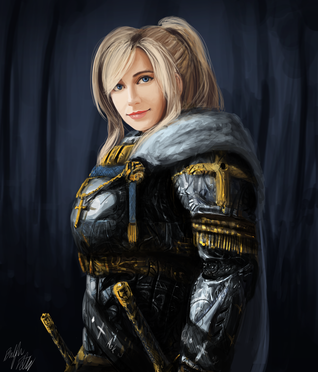 I have to admit that I was never really drawn to the Paladin class in D&D. AD&D 2e was the second game I ever role-played in (the first being Marvel) and after a quick glance at the options I was pretty married to the bard. When I flipped through the Player’s Handbook, the idea of needing 17 charisma to play such a character was a bit too much for a newbie like me. The Paladin seemed like the pompous version of the fighter class. Which I was also not a big fan of at the time. Where I actually gained insight into the Paladin class was in a completely different game system. Palladium created a Cyber Knight and along with the cool name, it came with the Code of Chivalry. That document defined my character, it fleshed her out and gave her purpose. With D&D I was still learning and so delving into which god to serve and creating my own code or practice wasn’t even on my radar. So I propose you should use the Code of Chivalry for a jumping off point for your next paladin. Let’s look at the code: The Code of Chivalry from Palladium Rifts Coalition Wars Cyber Knights published Dec 2000 1. To Live "Live one's life so that it is worthy of respect and honor. Live for freedom, justice, and all that is good.” Amended D&D Style: To live to bring honor to my deity Each deity and world of religion brings its own essence to your game play. The pantheons are both diverse and thorough (and there is a quick glance feature on pages 293-299 of the Player's Handbook) from fantasy worlds to European gods from cultures like the Greeks and the Nordic peoples. Discover your choices to enhance these codes for your particular character. Some examples: If your campaign has Egyptian deities as the pantheon of choice then you might choose to worship and serve Hathor, goddess of love, music, and motherhood. So you could include things like: Live one’s life in devotion to those who bring forth life through childbearing. Live to share music with the world to help spread the message of Hathor. If you are rooted in the Greyhawk world, you may be a paladin of Ehlonna, goddess of woodlands. Your codes under this category may be: Live as though you may not upset the balance of nature. Live and treat all life as equals. Living for your deity is important to include in your personal code. 2. Fair Play "Never attack an unarmed foe. Never use a Psi-Sword on an opponent not equal to the attack. Never charge an unhorsed opponent. Never attack from behind. Avoid cheating. Avoid torture.” Amended D&D Style: Sportsmanship These may seem like innocuous ideals for Sportsmanship but -speaking from experience- when these rules are played out and they essentially take ambush off the table, it changes your game completely. When playing D&D paladins I would use some of these, and add amendments. Perhaps a dwarven paladin of Moradin, the dwarf god of creation, will never attack an unarmed dwarf from behind, but other races may be subject to their tactics. Or maybe your code would read: Never cheat those who follow the true way of Heironeous. Give these coded ideas life based on your deity, your race, or even your disposition towards other races. Your interpretations of the code can also add flavour. 3. Nobility "Exhibit self control. Show respect to authority. Obey the laws if they do not supersede the rights of life. Administer justice. Administer mercy. Protect the innocent. Respect women.” Amended D&D Style: Oath of _______ In 5th edition, there are 3 Oaths that can be taken once your paladin reaches level 3. Each is unique and comes with different benefits to your character. These oaths have several tenets of devotion that are very similar to the code you are creating. You should look through these tenets to cement your ideal paladin. Even before the 3rd level, your paladin should be striving to meet some of these requirements to flesh them out and give them a direction. To aid you in your code creation, the oaths are: Oath of Devotion: this encompasses your stereotypical knight in shining armour who tend to be idealist and paragons of virtue Oath of the Ancients: these paladins adhere to a long-standing ideal of light (rather than its counter darkness), life is of particular importance to these folks Oath of Vengeance: are those concerned with justice and punishing those who have done wrong and set things right. But the tenets laid out in each of the oath sections in the Player’s Handbook (pg 85-88) have verbatim some of the thing you need to include in your Character Code Creation (CCC: new acronym FTW.) Go forth, read, and inwardly digest. 4. Valor "Exhibit courage in word and deed. Defend the weak and innocent. Fight for an ideal, like freedom. Fight with honor. Avenge the wronged. Never abandon a friend, ally, or noble cause.” Amended D&D Style: Valor I wouldn’t change much, if anything, in this section. These are the courageous things that you read about in fiction and history. These are what make a paladin larger than life, better than you, and a formidable opponent. 5. Honor "Always keep one's word of honor. Always maintain one's principles. Never betray a confidence or comrade. Avoid deception. Respect life. Honor all life. Respect all views of life.” Amended D&D Style: Honor Honor is still an important factor, and I would suggest some thinking on what is honorable for your character. The deity worship, the world they live in, and what situations drew them to the class will all determine what honor is for them. Some questions to get you thinking about honor CCC (character code creation) are: Is your world at war? If so, with who? Has your character been through life-changing tragedy? Did this change them? How did they find their faith? Why that deity? Who were their role models? Who has betrayed them? I know that this CCC (Character Code Creation) may look daunting before you start playing, but this will make for a more fleshed out paladin. There is something wholly terrible about those paladins that are just played as religious-type fighters. Let’s let these behemoths of virtue stand tall on their own. Put in the work ahead of time and you won’t be disappointed. This article was written by Vanessa who is a sarcastic, 30-something wife and mother. She likes things and stuff, but not simultaneously. When she isn’t involved in things and stuff, she teaches middle school science, math, art, and other random subjects. She loves new teenagers in action. They make her laugh and shake her head and her world is much better with laughter. She thinks everyone should be roleplaying. She is also trying out this new twitter handle at @sarasma_nessa  It's a standard trope of gaming that adventurers are hired by a wide variety of people in need to solve problems for them, but sometimes it's nice to have a standing relationship with a particular patron. This might be an individual, a corporation, a church, or some other entity that is the standard go-to when the party needs cash, information, training, social connection, perhaps even a purpose for adventuring. If you want your PC's to develop a long-lasting relationship with a patron, here are three factors to consider: 1. The Cash: When it comes to money, the rate at which it comes in is usually more important than the amount in reserve. For example, repentant miser Ezekiel Barckarl has a huge pile of coins he is eager to invest in a good cause, but the money may not flow back in fast enough for him to keep up with PC’s ongoing expenses. It may be a little better for old-fashioned aristocrats like Jules Weathermay and James Martigan*, but most landed nobility have investments tied up in entitlements and entailments, such that money flows in consistently, but not in large sums, and they are not eager to touch their reserves. For higher levels, consider more active rulers like the Reniers, or merchants like Hadron Marquit, the Carlyle Trading Company** or the Boritsi Trading Company, for whom the amount of money coming in every day exceeds the living expenses of any PC by several orders of magnitude. Churches and some secret societies fall into this category as well--the Syndicate of Enlightened Citizens is a group of old-money nobles with mercantile interests, playing such a long game they might theoretically finance anything. 2. The Cause: Obviously the quickest way to a PC's heart is through their coin purse, but the heart of the patron must be in the right place too. The critical element is whether they share enemies with the PC’s--a witchfinder society like the Brotherhood of Broken Blades might lose interest if the PC’s branch out into fighting werewolves. In your prospective patrons, include evil forces whose immediate goals appear benevolent: PC’s may become pawns of the Living Brain vs. Dominic, Malken vs. Bolshnik, even Inquisition vs. Fey. Eventually they will discover that their patron is as bad or worse than their enemy, but conflicts of interest make for good role-playing. Nor are such dangers exclusive to evil patrons--almost any good patron has skeletons in their closet, whether it’s Orinda Nahle’s vendetta against Gundar or Sasha Hiregaard’s family madness. 3. The Clout: Political legitimacy, introductions to important people, expert training, obscure secrets--clout is the stuff that can’t be bought easily, or at all. Magic is perhaps the most common kind of clout; the churches of Ezra, Hala and the Lawgiver make for good sponsors because of their healing magic. The best sponsors tend to have something unique that keeps PC’s coming back, such as Randall Marks’ arcane trivia or Philippe Delapont’s*** secrets of the dead. Although it’s one of the best features of a good sponsor, clout has limits; Falkfuhrer Calons Weir might be inclined to trade secrets with PC’s, but they risk dinner with Drakov if they say the wrong thing. Despite not being money, political or social clout may help meet financial needs: Lady Lara Vistin might provide a letter that entitles the bearer to room, board, and reasonable supplies (anything under 1gp) from any Nova Vaasans along the Volgis River. Finally, there are even a few patrons who might offer PC’s clout without cash, such as Cecil the Master Cat. So consider these three C’s when looking over your prospects for party patrons. Obviously not all patrons will excel in all three, but a little consideration for what they have and what they lack will prepare you for when the party looks for someone to pay the bills. *James Martigan and Orinda Nahle can be found in Andrew Cermak’s article “Lights in the Fog,” in the Book of Secrets, a netbook hosted by the Kargatane. **The Carlyle Trading Company can be found in the Van Richten Society Notes on Dopplegangers, a netbook hosted by the Fraternity of Shadows. ***Philippe Delapont can be found in the Undead Sea Scrolls 2003, a netbook hosted by the Fraternity of Shadows. Matthew Barrett has been playing and writing for Ravenloft for over twenty years, starting with the Kargatane's Book of S series (as Leyshon Campbell). He married his wife on Friday the 13th after proposing to her on Halloween. By tradition, the first story read at birth to each of their three children was The Barker’s Tour, from Ravenloft’s “Carnival” supplement.  Last weekend I attended a one-shot Pathfinder campaign; monsters were slain, pizza was eaten, and fun was had by all. Sounds like a normal session, right? This one was different: there were 14 players, almost half of which had never played a role-playing game in their life. The fact that fun was had by all is a little bit more impressive now, isn’t it? Sure, each combat took an hour (or more). Sure, the story was a bit contrived. However, the bottom line was that I would do it again in a heartbeat. The GM was a long-time veteran and put many hours of preparation into the game, which is the main reason it was so successful. Still, there were several aspects of the game which could have been improved. This got me thinking: how can the GM best manage large and inexperienced player groups and keep the game be enjoyable? Here’s what worked and what didn’t from the weekend. What worked 1) Pre-Made Characters The GM put in an incredible amount of work pre-generating 17 unique and fun characters from which players could choose. This drastically cut down on the amount of work needed during the session and got people into the game faster. Printouts of all relative spell and skill information also decreased the amount of core books required, a fringe benefit. 2) Splitting Up the Party Under normal circumstances, this would spell disaster. However, when your party could field a football team, it’s less risky. In larger groups, much of the player-to-player interaction (strategizing, teamwork, etc.) is lost in the huge melee. The GM splitting the party into manageable sub-groups of 3-5 allows for players to mix and strategize; furthermore, he varied the sub-groups from combat to combat which gave players a chance to play and interact with new people (many of those playing didn’t know one another) and adjust strategies according to the limitations of each team. 3) Diverse characters With a large number of players comes the potential for a highly diverse character set. Most, if not all, of the character classes were represented that evening, along with numerous supplemental classes. Even when there were duplicate characters in the same class, there were completely different builds. Not only did this give players choice, it led to interesting combinations in-game that you probably wouldn’t find otherwise. For example, there was a sub-party of a bard, sorcerer, and scout having to plan for combat. Woot for the rarely seen bard-tank! 4) Sub-Encounters Managed by Players Given that our mega-party was split into 3 or 4 sub-groups for many of the engagements, having one person manage all of them would be have been infeasible. The GM assigned an experienced player in each sub-group to the role of playing baddies for their group. While this certainly presented a conflict of interest, it allowed combats to move at a normal pace and freed up the GM to float between groups, making the story-related and more important decisions, rather than rolling dice for dozens of baddies. He did this for run-of-the-mill baddie fights and it worked swimmingly; he took control of all the encounters significant to the main story-line (e.g. a big boss fight). 5) Player Ordering When we did have combat with our mega-party, the GM had the players physically order themselves by changing seats according to their initiative order. While it felt like a game of musical chairs whenever we needed to switch seats, it helped keep the group focused on remembering whose turn it was: I go after the person on my right, no need to keep calling out asking where in the initiative order things are. What didn’t 6) Single GM While he split up the mega-party as often as he could, the game was too big to be run by a single, dedicated GM. I think it would have worked better if there was a second person acting as a co-GM, who could run engagements, interface with players, and split the time of all the things that GMs have to do effectively in half. Having 2 GMs could eliminate the need for having players run their own engagements entirely and I believe it would have streamlined the experience, creating more playtime for everyone. 7) Time Limits During Combat The GM instituted a 30 second time limit for each player to take their actions during combat. While this may have been a necessary evil, it felt limiting as a character. Given that each round would take 7 minutes if everyone took their 30 seconds, think about how many rounds most combats take. Some turns are more important than others and some actions need more forethought, so a 30 second limit (as flexible as he was with it) left me, even as an experienced player, feeling a bit rushed and prevented me from enjoying some of the tactical aspects of combat. 8) Social Limitations This naturally happens in the social dynamics of a large group of people when they get together: the loud, boisterous types dominate and the more quiet and shy people get left out. As a loud and boisterous individual, this didn’t impact me personally, but I noticed that some people enjoyed themselves less, as they were more uncomfortable with the situation. The GM, and I as a player, could only do so much to include everyone in the game. As such, the experiences of individual players in large groups are more varied, with some having a great time and others feeling forgotten, than that of a smaller group. All in all, I counted the experience as a wild success, kinks notwithstanding. The fact that I got to play Mr. T, Night Elf Mohawk, didn’t hurt things either. After he was crushed to death from a failed attempt to “Pity the Fool” at a giant, I then took over as Yoda, the goblin wizard. The GM was really boss at making fun characters. - Jake is one of High Level Games’ international correspondents, reporting from the great state of Texas in the U.S. of A. He aspires one day to become a Night Elf Mohawk himself. 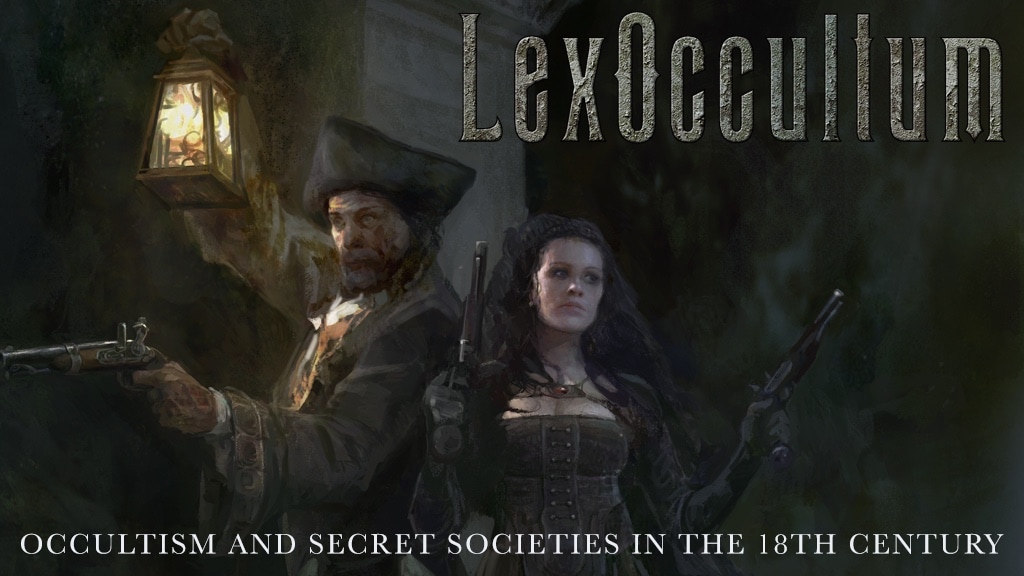 RiotMinds has been busy for the past year. Following a successful Kickstarter campaign to translate their Nordic myth and folklore inspired Drakar och Demoner Trudvang into English as Trudvang Chronicles, the company has already smashed through their initial goals in a follow up campaign to bring their game of 18th century occult mysteries and secret societies, LexOccultum, to the English speaking world. I had the opportunity to ask Theo Bergquist a few questions about LexOccultum and Trudvang Chronicles, along with what's next for RiotMinds. (Full disclaimer: I backed the Trudvang Chronicles Kickstarter last year.) 1- What makes LexOccultum different from other mystery and intrigue games out there, and what makes it different from Trudvang Chronicles, which is powered by the same engine? Theo: I guess we focus more on the occult and mystery play and less horror and also the time era. LexOccultum is set in a fictive 18th century whereas many other games take place in the 19th century. One of the main themes in the game is secret societies and conspiracies and less of vampires and werewolves. Trudvang Chronicles is a pure fantasy game and even though the two games share the same engine I’d say that LexOccultum is deadlier and more ”realistic” than Trudvang Chronicles. 2- Both Trudvang Chronicles and LexOccultum feature excellent artwork that seems to help shape the world. Did you have a setting in mind and use the art to shape the world, or did you come across the art first and build the world around the art? Theo: Thanks, yes we work with truly great artists. Yes, we had a clear view of how and what the look and feel should be already from start. When I fist approached Paul Bonner years back I’d see his great work on Mutant Chronicles but also some great fantasy pieces. When I told him we was looking for a John Bauer look-and-feel he was really happy and I’d say he’s nailed it since then. Alvaro Tapia is very much behind the design of both worlds. I was working with Justin Sweet on some Conan covers and felt he was the perfect man for a more ”mature” and less ”fantasy” look that we decided to have for LexOccultum. So yes, even though we’re the first to acknowledge the great work of the artists, I’d say that we had a clear vision from start. 3- The game was originally called Götterdämmerung in Swedish; what does 18th century occultism have to do with the fall of the Norse/Germanic gods? Theo: The 18th century was the great century of the enlightenment and as such, for the first time in history, the church was starting to loose it’s grip and power over the people. The ”gods” were losing power. Götterdämmerung means Ragnarok, the fall of the gods, but also Armageddon, it was a perfect name for a game combining the great mysteries, occultism and the enlightenment. Is this a second fall of man? Or is it the fall of the church? It’s a battle between man and god so to say. 4- Religion and myth play a big part in shaping Trudvang’s identity; is this something you specialize in and is there a particular reason for this focus in LexOccultum and Trudvang? Theo: Good questions. I guess we want our worlds and settings to be believable and to have the depth in both mythology and ”every day life". Without that it’s just another hack-and-slack fantasy game. We’ve spent tons and tons of hours for both games just to do the research of which much was never used. However, it adds to the games and give them that flavor we like. For example the Stormlands (a region in the Trudvang world) is a mix of barbarian/viking culture and Mongolian culture, it’s not just another viking region. That kind of ”cross-over” and mix with our own ideas is what make the worlds different I guess. 5- You’re in the middle of what will be your second successful campaign to bring your games into English. What’s next for LexOccultum, Trudvang Chronicles, and RiotMinds? Theo: Next up for Trudvang Chronicles is the Stormlands, Mittland and Westmark source books, and the great campaign SnowSaga. We haven’t fully decided in what order of scope they will be launched but focus on finalizing the core rules now. For LexOccultum we have tons of exciting stuff including a book about the secret societies, a monster book, campaigns and source books about the world. This will be a fun ride and for the English audience these are the two games we focus on. I have this crazy idea of expanding the Trudvang world into a more ”arabic” or ”asian” setting, but first things first.We’re so happy about the great support both our games have gained from the international audience and now it’s time for us to deliver. Check out the LexOccultum Kickstarter here. The campaign ends Friday, March 24. 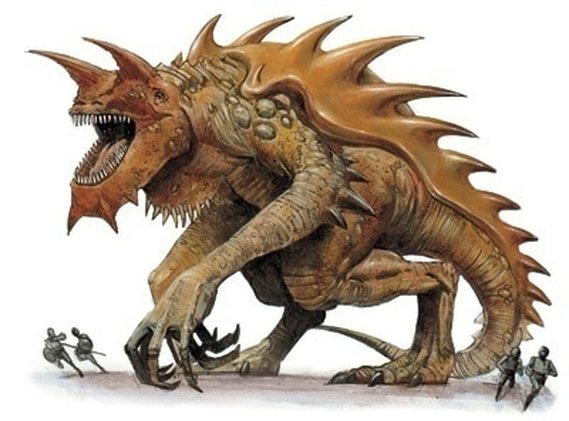 Does everyone remember the Tarrasque? The fabled Tarrasque is a unique monster from the D&D world: one of a kind, huge, a mindless force of destruction. It appears every couple of generations, has ten gazillion hit points, and wreaks utter havoc on everything in its path. It’s not something that anyone in their right mind would seek out. In the world of Game Mastering, there is another Tarrasque, a unique challenge that only the bravest survive: I’m talking about the mega-party. The mega-party is an ungainly group of eight, nine, ten player characters, a mixed bag of gaming noobs and veterans, bards and battle-turtles and min-maxers. It’s usually brought about by a mixture of poor decisions and good intentions (hey, my cousin Bob is in town, and he’s always wanted to play, so I brought him along!). To non-gamers, a mega-party sounds awesome: the more the merrier, right? To the Game Master, the mega party is a nightmare. Every burden, every clerical detail a GM faces is amplified when a group reaches a certain size. Combat becomes double-entry book-keeping, players get bored, challenging encounters become dice-rolling marathons, and no one ends up having any fun. The GM ends up frustrated and exhausted, and the players get disengaged and bored. I met my Tarrasque recently. My wife has a friend we’ll call Nice Debbie (she’s Nice Debbie because my wife knows several Debbies, and not all are nice), and Nice Debbie asked if I could run a game for her kids and some friends. I like Nice Debbie, so I agreed, and brought two of my players from my regular game along with me. Five players. Perfect. We started the introductory 5th Edition D&D adventure, Lost Mines of Phandelver, and had a blast. But word began to spread. Friends of the players got added, and suddenly we were at seven players. I decided that seven was my limit. I started prepping the next session, but then came Player Number Eight. Number Eight is a teacher at my kids’ school. He’s a very cool guy, and one of their favorite teachers. He’s been itching to play. He bought all the core books and then some. Worst of all, he’s the kind of guy that you meet and think, “damn, I bet he’d be fun to roll dice with”. He made us eight (nine if you count me), and, despite all expectations, we’ve ended up having a great time. I survived running a table of eight. It can be done, and it can be fun. But I learned some critical tricks along the way. I hope they prove useful if you ever find yourself fighting your own Mega-Party Tarrasque. 1 - Simplify Combat I can’t overstate this: combat is the bottleneck in almost every tabletop RPG I’ve played. It can bog down a normal-sized group, but when you get beyond six players, D&D-style combat can rapidly become an excruciating slog. Your only hope is to simplify and streamline combat in every possible way. 1 - Initiative Cards: I had all the players fill out standard 3” X 5” index cards before the game with some basic information: Armor Class, Hit Points, Character Name and Player Name, and all of their Stat Modifiers. Pre-game, I had all the NPCs and monsters statted out on cards as well. When combat starts, make a stack in initiative order of players and foes, and just flip through the stack. This prevents rolling over a combat round and having a player (who’s been noodling on their phone the whole time) complain that they didn’t get their turn. It also provides a handy place to scrawl down status effects, conditions and spell durations. 2 - Bring Back the Minions: 4th Edition D&D got a lot of hate, but it had some good ‘crunch’ mechanics. One of my favorites was the Minion. Minions were like any other low-level cannon fodder, but they had a single hit point. Basically, if they get hit, they’re dead. These are great for large-party combat because they simplify tracking monster damage, and they also let everyone feel like a hero as they mow through hordes of underlings. 3- Have Players Use Off-Time: this is hard, but it’s critical. When a player is waiting for their turn, they need to be planning. They need to be looking up special attacks, spells, whatever it is that they want to do on their turn. If a player’s turn rolls around and they start flipping pages, put their character on ‘defense’ or ‘hold action’, depending on the game system, and move to the next player. This is really hard, and it pisses people off; but, when you’re trying to manage eight players and sixteen goblins, you don’t have time for a player who waits until their turn to look up how Burning Hands actually works. 2- Small Spotlights Look, the worst part of running a large group isn’t the pain it causes the GM. It’s the simple fact that, when a group is too big, nobody gets any time in the spotlight. We all play RPG’s to be heroes, to be badasses, and when you’re one of eight, it’s hard to have any heroic moments. Hell, if the dice favor other players, a monster might be dead before your turn even comes up. This is a problem only you as GM can fix. Make a conscious effort to find a place for everybody to do their thing. If you have a Thief, toss in some locked chests or trapped doors, and ensure they get to find them, even if you have to fudge dice rolls. For arcane types, maybe include some ethereal monsters immune to physical attacks, or maybe a magically warded door. Divine players can save the day against undead, so, by God, throw some skeletons at them. For the Fighter types, give them a mob of 1HP minions to demolish or a door to kick in. Regardless of party make-up, you have to give everybody a chance to be badass. I know this goes against basic GM advice to “make a consistent world and let the players work their own way through it”. That’s generally good advice, but it sucks when you have a large group. Find places for your players to shine, even if it pushes (gently) against narrative plausibility. Please trust me on this: your players will remember the time they brandished their holy symbol to Turn Undead against the skeletons more than they’ll bitch about the narrative inconsistency of why there were skeletons in a goblin den in the first place. 3- Find a Home Figuring this out was pure serendipity, thanks to Wizards of the Coast and The Lost Mines of Phandelver. You need a base, a place like Phandalin, someplace where the adventurers can return to between adventurers. This is important, because, as GM of a large group, you’ll soon find that large groups are really damned hard to get together. Someone in the group will have a sick Aunt Edna, or a kid with the flu, or band practice, or a wicked hangover, and won’t be able to make a session. Missing players can really break immersion if suddenly Willow Cloverleaf the Druid disappears in the middle of dungeon; but if you can keep things episodic, plot-wise, they can start and end each session at ‘home’. This way, when Aunt Edna gets sick and Willow Cloverleaf won’t be with the party, it takes minimal hand-waving to explain that she had to go ‘commune with her druid circle’ for this session. Likewise, God forbid you have to add someone or get turn-over in your group, it’s really easy to narratively explain meeting Barfbreath the Barbarian at the Coloured Animal Inn and why he wants to join up with the group. 4- Be the Dad if Necessary Look, this sucks. Trust me, I know: you’d be hard pressed to find a more conflict-avoidant person than me. But when it’s my responsibility to keep the game moving and maximize your fun, there have to be some ground rules: force players to be ready on their turn, ensure they minimize side-conversations during other people’s turn, and, man I know this sucks, maybe require people to turn off their frigging phones while they’re at the table. A lot of stuff that can slide at a normal sized table turns into a problem when the party becomes a crowd. It’s a fine line, and nobody can draw it or walk it but you; but be prepared to enforce things that normally aren’t an issue. Don’t worry about me and my Tarrasque: I’ve got a handle on this particular group, all eight of them. And the best part is that Number Eight, the guy who just seemed like a great gamer in the making? He’s itching to start running his own game, and I have a pain-in-the-ass Half-Elf Rogue already rolled up. It’ll be nice to roll dice without having to spend a week prepping monsters and herding cats beforehand. Jack Benner is the Renaissance Redneck and sole roustabout at Stick in the Mud Press http://stickinthemudgames.blogspot.com/ 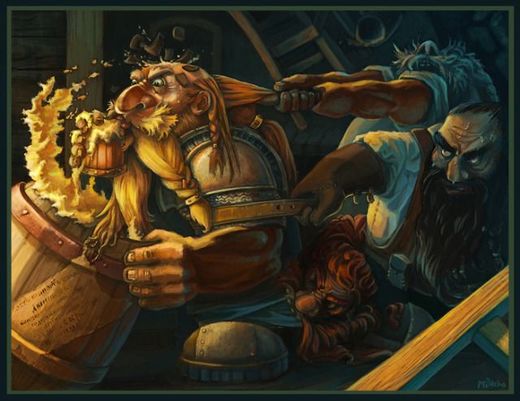 GMing styles are as diverse as RPG settings. Strict, lenient, a combination of the two, or a combination of a dozen other variants and gaming-upbringings, you're bound to run into a few of these during your role-playing tenure. And as good and encouraged as diversity is around these parts, and as it should be around the world on a daily basis, there are those that run their sessions with a bit of an iron grip; those who turn players away by either adhering too strictly to the rules or not knowing how to cater to a particular group's needs. Role-players are possibly even more diverse than the GMs themselves – if even for the fact that they tend to outnumber the impartial role-playing referees on a bunch-to-1 basis – but this doesn't mean that they don't have a certain common denominator that makes them tick, and helps them get the most out of a given RPG session. What follows are 3 short, general guidelines that I find a GM should follow to get as much response out of their players, and to immerse them in the world/adventure/campaign from the get-go. I call these... *drum roll* *more drums rolling* *drums rolling down the stairs out of control* The three Fs of role-playing... playing... aying... ing... 1. Freedom Freedom is a beautiful thing to have, in life, as well as gaming. Being able to feel like your choices in-character take you in one direction or another and help you evolve over time, without the contrivances of railroading or others pushing and prodding you into making "the right choice," can do wonders for someone's self growth. It's all well and good that you've let your players know taking on that dragon using nothing but balsa wood and chewing gum might end up with them having to roll up new characters, but who are you to rain on their wannabe-MacGyver moment? Work WITH the players when building your adventure. Have them make their mark on anything and everything you throw at them. You'd be surprised at the amount of good content a party can come up with, provided they feel their input is valued. A GM's duty is first and foremost that of setting the scene, then giving the players the tools they need to achieve whatever they set out to do, and then carefully, and without much interference, seeing to it that they are supplied with any and all set pieces that they feel they need. Within reason, of course. If anyone wants to jump off the edge of the Disc, it's their funeral; there's no need to drag the rest of the party down with them. 2. Flexibility The aforementioned F brings with it a second one: the ability to bend and adapt to any actions the players may attempt while still making sure a certain logical plot arc exists amidst all the shenanigans, one-liners, witness-me-events, and other incredible feats of polyhedral-assisted madness. There should always be a reason for that madness. Unless you're running a Monty Python campaign. That always seems to descend into hamster/elderberry-related parenting jokes, political commentary regarding lake-residing females, and generally Antiochian amounts of taunting, French or otherwise. One or more players' freedom should never come at the expense of the party's main goal, else you risk ending with a fragmented group. This often ends with players aiming for something entirely different and trying to reach it in a completely different way. This may also stem from a party not having perfect chemistry with one another, but that's where the GM steps in, distilling every person's individual strengths, showcasing them, and allowing them to shine within the confines of any given situation... and, of course, make sure their weaknesses are thrown in as a monkey wrench whenever the situation calls for it. Insert evil laughter here. Stick some yoga in there, in the literal sense of the word and you're bound to score some extra points for creativity! 3. Finesse Role-playing is all about the je-ne-sais-quoi... The piece de resistance... The boogie that rocks the woogie! You know, that one little aspect that takes a regular session, uses what the players have added to it, spins it around and turns it into a time of greatness, an epiphany, a jaw-dropping crescendo reveal into an exploding epilogue that nobody saw coming but the seeds of which you've been planting from the get-go. It's your duty as a GM to tweak and finely tune any and all aspects of a story in order to make it more about the players and their characters than the story itself. There's no way you'll be able to impress a group if you've got a sterile plot onto which you just slap their characters' names and hope they'll enjoy it. Even with a pre-published adventure, you need to dig around its set course, veer slightly off it when the situation calls for it, peppering each scene with character background hooks, corner-of-your-eye details, or otherwise obscure references that may or may not add up to anything in the long run... but they should! It's all of these tiny details that you sprinkle liberally across the entirety of an adventure, the smallest mannerisms of a random passerby performing a mundane task or the way some wizard or another is holding their wand, harkening to a long-past conflict the players may have had... these are the elements of Finesse that bring out not only your idea of a grand story arc, but also blend the players into it and make them feel like the world they're traveling through is lived in by them as well as your NPCs and beasties. So get tinkering, keep your eyes and mind open at anything the players throw at you – beware of Core Books, those always make a dent – and organically insert their quirks into that apocalyptic post-dwarven dieselpunk-unicorn saga you're brewing. In closing We could talk about these ad nauseam and go into a bunch of details for each point, so I hope I've covered the basics of the three Fs of role-playing,,, playing... aying... ing... and you can take these and explore what each of them means to your particular situation. Either that, or I've just wasted your time on some random words beginning with F that have little to no bearing on your enjoyment of the role-playing experience as a whole. Thanks for stopping by anyway! Writer, gamer, and - provided he's got the time for it - loving husband, Costin does not rule out sacrifices to the Great Old Ones in order to get into the gaming industry. He's been role-playing for the better part of 6 years, but has been a joker, gamer and storyteller for as long as he can remember. His greatest pride is once improvising a 4-way argument between a grave digger, a dyslexic man, an adopted child, and a sheep, all by himself. That moment is also the closest he's ever come to giving himself a role-playing aneurysm... Thus far. He's been dabbling in plenty of writing ventures lately, and you can find him hanging his words around the Oh Be Wandering hangout page on Facebook - https://goo.gl/4be3Bj  If you’re not from Canada, you probably don’t know that In February of 2017 we lost a pillar of Canadiana; a goliath of storytelling and all around amazing guy. Stuart Mclean was a Broadcaster, humorist, monologist, three-time winner of the Steven Leacock Memorial medal for humour, and member of the Order of Canada. He is best known for his story series, the Vinyl Café hosted by CBC and presented live at his annual Christmas Tour. With his passing I’ve been spending a lot of time pondering his legacy and the impact he had on my life. What could best be described as fables of Dave, Morley, and the rest of the gang are so deeply embedded in my psyche that his characters are basically family now. Stuart McLean was a powerful storyteller and I’ve been trying to emulate his work for years, and this has certainly impacted the way I DM. Here are a few of the lessons I learned from my master, Stuart McLean. 1. Sometimes it’s the Small Things That Lead to Great Adventures In “No Tax on Truffles” and “Boy Wanted” Dave’s Son Sam picks up a magazine on cooking in a doctor’s office and 11 years later (actual years, the first episode was broadcast in 2001, the second in 2012) Sam gets his first job at Harmon’s, working for the man who sold him his first truffle. Sometimes a seemingly innocuous and commonplace occurrence can lead to big things. Like Sam reading a magazine out of boredom, my PCs go through far too many simple and meaningless interactions on a daily basis to talk about in any session. But that doesn’t mean I can’t plant tiny, almost imperceptible seeds of adventure for them and bury it in the soil of other adventures and rewards. An interesting book with no apparent value might be something that one of them decides to reads around the campfire at night. Perchance they find a simple piece of jewellery that, a dozen sessions later, leads them to the noble person who it was stolen from. Whatever the mechanism I love to put seeming innocuous pieces into my sessions that lead to big things down the road. 2. Mood is Everything Perhaps no story of Stuart’s captures mood like “Summer of Stars”. Weaving background and imagery into a story so memorable that just the thought of it still makes me smile and remember it like I was at Grandma’s housing chasing crashed UFOs. Sometimes in my campaign I spend just a few words to set the scene, is it dark or light; raining or clear. But the best times are the long and slow build; the stories that start with a memory, rise slowly through tension, seasoned with descriptive narrative, and ending in a rich tapestry of imagery. It’s hard to do, but it’s worth it. For me it starts with a reoccurring NPC, someone the PCs already have a connection to and memories of. The conflict starts small, a simple request for help or a small job that needs doing. I like to scatter descriptive narrative throughout the story giving them just enough that they fill in the blanks with their imagination then I like to finish in a place truly memorable but somehow linked back to the original NPC. 3. The Best Stories are Relatable. I’ve spent a lot of time in the wilderness, so for me, the time Dave and Morley celebrated their anniversary on a Canoe trip is definitely something I can relate to. It’s how relatable Dave, Morley, and their neighbours’ misadventures are that makes Stuart’s stories so incredible. So now I spend far too much time thinking and planning what might happen to a group of friends stumbling home after a long night at the pub when they are stumbling through a city of magic and thieves’ guilds, doppelgangers and portals. I wonder, why don’t more ambushes happen when a PC is using the latrine and where does the struggle to keep a roof over your head and food in your belly fit into my campaign? I always try to introduce simple and relatable mechanisms into the NPCs adventures. 4. The World is Full of Normal People The Town of Big Narrows, where Dave grew up is populated with extraordinarily normal people who, despite being fictional, have a special place in my heart. Even in a fantasy world, most people will be, for lack of a better word, common. Most adventurers come from humble beginnings and so do most of my villains. I’ve found that some of the most endearing NPCs are the most normal, the citizens that come from some place in my shared cultural identity with my players. But the true magic of this happens when the PCs discover that their nemesis is actually just a farm boy who, through some struggle or another, finds themselves in opposition with the party (I love watching the moral struggle play across their faces). I suppose what I’m trying to say about NPCs is best summed up in the motto of Dave’s store, The Vinyl Café, “We May Not be Big, But We’re Small”; so I try to never undervalue the impact that a simple, although well placed character with a small part can have. 5. Make ‘em Cry. Of all the stories I have ever heard or read, Morte d’Arthur is the saddest. I’ve also shared the loss of a family pet and so a measure of empathy and sadness is inevitable. However, to feel the full depth of the story I needed to have first listened to “Turkey’s are Terrific”, “Arthur the Dog”, and a dozen other stories where Arthur the potato stealing dog insinuated himself into my heart. I try to embrace tragedy in my stories but I’ve learned that to do this properly takes time. I’ve found that it often starts with the players bonding with some random and unexpected NPC. I cultivate that relationship and build out a more in-depth back-story for them and increase the interactions. Many levels later, after the player’s have come to rely on those interactions, tragedy strikes. 6. There is Magic in the Mystery. “Hello Monster” is a story where Dave gets stuck in the storm sewer and finds himself in a hilarious and ultimately futile conversation with a young boy who believes Dave is a sewer monster. I’ve learned that sometimes the mystery is the most magical part of the high fantasy campaign. I used to feel the need to be able to explain every magical effect or impossible feat using the literature provided; but now, if there is no easy answer I use allusion and mystery. I like to leave the player’s in the dark, just a little bit. Never quite knowing the whole story gives them room to fill in the blanks with their own imagination and like the boy who may live his life telling people about the sewer monsters of the Toronto suburbs, the PCs will have their own stories to tell. As all of us fans struggle through the realization that Stuart is gone and there will be no more Vinyl Café I know that he would not want us to mourn him for long. Instead I choose to remember the legacy of one of the world’s best storytellers and to try, in my small way, to ensure that the legacy lives on through my own creative works. Stuart, you will be missed, thank you for the years of entertainment and thank you for the endless laughter, tears, and memories. Bryan recommends that everyone immediately start downloading the Vinyl Café podcasts by CBC. Also, go buy one of his books. To hear a tribute to Stuart McLean and his work go to: http://www.cbc.ca/listen/shows/vinyl-cafe/episode/11713626 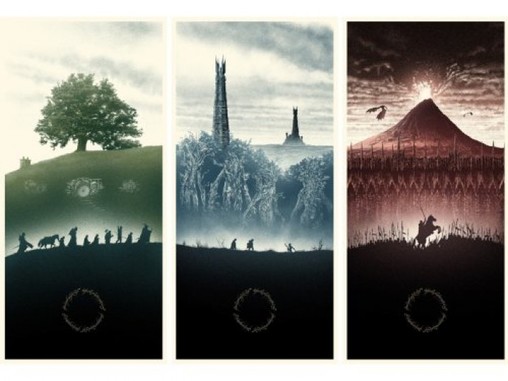 It’s no secret; J.R.R Tolkien is arguably the best author to ever live. The Hobbit and The Lord of the Rings are two of the most influential pieces of our time. Stories of hope, triumph, sadness, and defeat; all of the beauty of literature wrapped up with a bow on top. I’m a daft man so I say daft things. I one hundred and ten percent believe that Middle Earth is the best fantasy setting ever created, with The Lord of the Rings being humanity’s magnum opus. However, I won’t be so naïve to believe that this was all accomplished by Tolkien himself, Peter Jackson’s film adaptations have a very large role to play in this. I mean, for crying out loud, there are scholars devoted to understanding his world! Let’s begin, shall we? 1). They Defined a Genre Fantasy has been around since the dawn of time. Since humankind was given the gift of speech, we have created fantastical stories, righteous beings of good, malevolent forces of evil. Generations copied generations, some changed small details, some details were scrapped completely. Tolkien’s particular brand of fantasy is no different. Everybody involved with the fantasy genre is familiar with the four pillars: Elves, Dwarves, Orcs and Hobbits (or Halflings). We know that this wasn’t created by Tolkien. Many of his ideas come from previous world mythologies. That said, he did define them in a way that has become the bedrock of the genre. Nearly all the tropes we know and love come from Tolkien’s Middle Earth. He took mythologies which didn’t agree and shaped the clay of each into a detailed masterpiece. He even gave each race its own language and writing, also somewhat akin to real languages and texts. (Editor note, Tolkein was a scholar of languages first and foremost) It’s mind boggling how detailed he made each race and divine being that lived within this world. Surprising still, is how things elements are still found in modern fantasy. Most of it goes untouched. The visage of dwarves is (more oft than not) so ridiculously similar to Tolkien’s dwarves that you can’t help but tip your hat to the man. Moreover, my favorite trope that comes from The Lord of the Rings and Middle Earth itself is the idea of Sauron. The shadow of a dark lord, no more than a whisper of a forgotten age, coming back to torment and destroy the world. That book is so well used and worn that it’s almost irresistible to use that idea in a fantasy game or novel. It’s just so good and gives everything more depth. It brings the world alive and makes you feel like there’s a history that has been lost to the erosion of time. 2). Rich History Built Over a Lifetime As I alluded to in my previous point, it’s not unknown that Tolkien’s world is revered for being incredibly detailed. With about 10,000 years of history to back up, The Lord of the Rings and The Hobbit, one can’t help but feel wonder and amazement while reading these stories. Tolkien’s passion and devotion to his work shines brightly from the very pages of the text. From the defeat of Morgoth to the fall of Numenor, Middle Earth is littered with epic and heroic stories. The Silmarillion is the book that outlines all of this history. What a dense piece of work. Difficult to read, too. However, the one thing that many people agree on, is that in order to read it without wanting to die, you almost have to approach it like you would The Bible. Which is surely an impressive feat to achieve. What makes this piece of work even more beautiful is the fact that it wasn’t published in his lifetime. Though all thoughts and musings were his, the time it was published pays homage to Tolkien in a moving way. Messing up the order of things further adds wonder and depth to Middle Earth. Many, many times throughout The Lord of the Rings and The Hobbit, history is referenced without much explanation. It constantly hints at a bigger world outside of the tomes, it makes the reader hunger for more. Better yet, Christopher Tolkien honored his father and the fans by delivering that history. Almost needless to say, it didn’t disappoint. That sly bastard took us for one last ride too, leaving immense holes in history. Much the way that real history functions, we have to use what we know as fact to construct our own picture of what may have happened during undocumented times. Too bad there’s no archaeology to dig up on the subject, because I’m still starving for Middle Earth. Within this torture, there is an even further spark of brilliance. Plot/history holes were intentionally left in Middle Earth’s history by its creator, for brave and skilled minds to continue his work; to continue to write the story of Middle Earth, to bring it that much closer to our own reality. 3). Allegories by Accident The ongoing debate: Was The Lord of the Rings an allegory for World War II? According to Tolkien himself, absolutely not. What baffles me further is that he said it wasn’t an allegory for anything at all. Yet here we are, able to pull elements of The Bible, World War II and many different aspects of the real world from this piece. To me, that is how you know the man was a master of pen and ink. He was able to hit so close to reality with a fantasy setting that people thought that he was trying to send out a parallel message to two major events in our actual history. The Lord of the Rings has many instances of theme exposure that have resonated with generations of people and still hold extreme relevance. The character of Tom Bombadil is the embodiment of neutrality. He’s the only person that isn’t affected by the corruption of the One Ring. Yet, he just doesn’t have a care in the world. If he was given the Ring to keep it from the Dark Lord, Sauron, he would simply lose it out of sheer obliviousness. Seemingly trivial at first, when you dig it up and pull it apart, it says a lot about Tolkien’s view on how the world works and the nature of humanity. To be perfectly honest, I don’t believe he’s wrong. Heavy references to industrialism are also strewn throughout the piece. Tolkien hated industry and it very much reflected in the books. Specifically, with Saruman being a villain, Treebeard being heavily neutral to the lot of it, and then acting when he had realized his forest had been ruined. At first this seems like simply a plot point to make things twist and turn, but many quotes from Treebeard and Saruman help reinforce Tolkien’s idea of anti-industrialism. This whole point is part of the reason why people think that Sauron is an allegory for Adolf Hitler. Saruman was in league with Sauron and was the main industrial force behind his plot to take over Middle Earth. Nazi Germany was very much an industrialist nation and Tolkien’s overall disdain for such ideals led people to believe this was a statement about the second great war. 4). We Were All Duped The Lord of the Rings was about Samwise Gamgee. There, I said it. You weren’t the only one tricked into thinking it was about Frodo or the destruction of The One Ring and its dark master. Now let’s break this idea down a bit. The first hint we see for this idea is that Samwise was “punished” for eavesdropping on Gandalf and Frodo’s conversation about The One Ring. At first this looks like a plot device to give Frodo a companion. Let’s be honest, it wasn’t going to be Gandalf, as he so expertly demonstrated in The Hobbit. Lazy bastard. Anyway, this was how Sam became directly involved in the events of the books. Later on, at the battle of Amon Hen, we see Sam get sucked back into the fray when Frodo leaves the Fellowship of the Ring at the Falls of Rauros. It’s the second time we see Sam being drawn in, directly influencing the fate of the Ring, expertly disguised as an act of friendship. As the story progresses, Sam is clearly unaffected by the lure of the Ring. But wait, I thought Tom Bombadil was the only one?! Part of my point exactly. When Frodo and Sam are following Gollum and talk about the journey home, Frodo tells him that he wouldn’t have gotten far without him. That scene was only in the films, if I’m not mistaken, but it’s still oddly suspicious. Samwise sees the end of the adventure and the destruction of the ring before going back home. This is where I believe it’s cemented that Sam was the main character. Frodo is given the opportunity to head to the Undying Lands with Lord Elrond and Bilbo. HE FREAKING TAKES IT! And then we never hear of him again! The book is given to Sam, “The last pages are for you,” and the Frodo just hops on his boat and leaves. Before that even happens, we see Sam get married and then we find out Sam is happy with his wife and kids. He’s the one that gets the happy ending, whereas Frodo completely disappears from the picture. Samwise the Brave, we love you buddy. 5). Gave Birth to the Best Book to Film Adaptation. Ever. And now, the moment you’ve all been waiting for; the discussion about the films. To start, I need to accentuate the fact that even after all this time, these films hold up incredibly well. Some of the special effects are seen to be sub-par when watching the Blu-ray versions of the movies but because they didn’t cut any corners and used as little CGI as they could get away with, these films look incredible. The incredible work of Peter Jackson in weeding out what needed to go into the films and what simply couldn’t was done with a grace that I doubt will ever be matched again. Casting was incredible, special effects and props were lifelike in a way that can’t easily be explained. No doubt, these are points that color the fact, that by film standards, they are epic. In the sense of adaptation, why were they so great? What I instantly think of as great is the music score composed by Howard Shore. A soundtrack can sometimes be so disgustingly underestimated, but, in The Lord of the Rings it was as important a point as the characters, props and shots. Simply listening to this soundtrack can bring one into a daydream, transport them into Middle Earth and all its wonders. I honestly believe that if Tolkien were alive to hear these pieces, he’d shed a tear at how perfect they are. They reinforce the overall tone and nature of the story in a way that words don’t do a shred of justice. Peter Jackson’s overall direction of the films is no small feat to be accomplished. Shooting the film in New Zealand was an expert decision, mainly because it looks like Middle Earth was plopped down into the real world. Each scene in the films is picked so perfectly that the music that accompanies it makes the shots so atmospheric that there could be no dialogue and I would still be brought to amazement and wonder. Adaptation-wise, the awesome direction behind this trilogy is not the only shining star on the field. Many people are angry about Jackson cutting out Tom Bombadil and taking away the character of Farmer Maggot besides his angry sickle above the corn stalks, but they were done away with for just reason. It gave us scenes that we didn’t have in the books, to help characterize the main cast in the time window that film is restricted. Frodo and Sam in Osgiliath, Gollum and Smeagol having an argument (thanks Andy Sirkis), the immense battle scenes at the Pelennor Fields, the Black Gate, Amon Hen, the list goes on. The cuts that were made weren’t made for no reason, they were made to keep it film friendly and it didn’t disrupt the story, even slightly. It brings the pages to life in an epic and fantastical way. The length of the films is daunting as it is, can you imagine what they had been like if the books were transcribed to film verbatim? Only crazy people like me would have seen it! Thank you Tolkien and Peter Jackson for creating the best works of our existence. Sean is a BMW technician by day, the Heavy Metal GM by night, and loves everything about 13th Age. If the game interests you and you want to learn more, check out his 13th Age blog here. 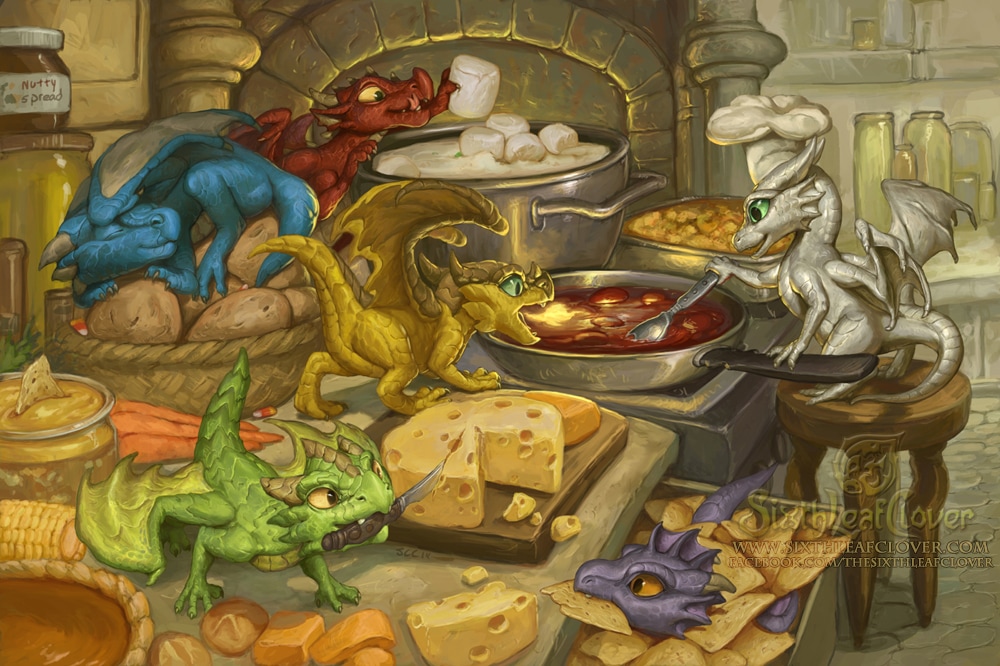 There’s a certain charm to the newest edition. It’s almost intangible. Although I find all of it very enjoyable, in a couple instances, it could be considered… lacking. Don’t get me wrong, it's just as easy to pour your heart and soul into a character as it’s always been. I just feel like there a few holes to fill. This is probably just my way of coping with the fact I can't take exotic weapon proficiencies and make everything strange for the party. Here are a few things I feel could be spiced up a bit. 1- Shields Who doesn’t like having an extra layer of steel between you and the creatures trying to kill you? No one. That's who. No one and that jerk at the table whose chaotic neutral to be genuinely evil without the official label. D&D 5e seems to be a little lacking in the shield department, this time around. Especially considering how useful they were in historical combat, and the plethora of styles and materials that have been used throughout history. Things like bucklers and tower shields would be great to see implemented. For example: bucklers could increase AC by a lower amount, say +1, but could have some sort of striking feature where you could make an attack with it for minimal damage. Tower shields could give +3 to AC but have a disadvantage if you’re carrying it without a certain strength, as well as the ability to plant it in the ground for cover. Hell, even them being made of wood or other metals could have an effect on the player. Sure this is something you could work out with your DM, but isn’t it nice to have the source material give actual stats and features for these types of things? 2- Maneuvers I’m not saying maneuvers are boring (although more of them would be beautiful). Quite the opposite. I think MORE classes should have maneuvers as an option. For those of you who are unsure of what maneuvers are, they are located on page 74 of the PHB, as part of the battlemaster subclass for fighters. Other than that, they never show up! They add a dynamic to the game that’s so intriguing and interesting. It just feels a little underdeveloped. I know there's a feat for extra maneuvers, but not everyone does feats and it's a rather miniscule amount of maneuvers instead of having a subclass built around them. Combat based rogues would benefit greatly from maneuvers. Sadly, there’s no subclass for the resident sneaky badass who fights as good as he steals. The monk falls victim to this too! The monk's martial arts feel like they could have been explored more. Maneuvers could have made the monk feel more, uh… “Whachaaaa,” if you catch my meaning. Long story short, maneuvers are glorious, why can’t they be everywhere? Paint the walls with maneuvers, even if it would make combat longer. 3- Subclasses (In certain instances) Yes yes, take my silly concerns and shove them up my (Upper management has reduced Jarod’s non-existent pay due to subject matter complaints in this sentence) because unearthed arcana already offers a billion and a half extra subclasses. If you ask me a few classes could use a little more variety in the base books. Such as sorcerers. They only have two subclasses and one might argue only one of those subclasses is worth playing, but that’s a subject for another day. This seems like a comparably low amount to the Cleric and Wizard’s cornucopia of subclasses. Other classes that suffer from this include the Ranger, Barbarian and Druid (the woodland people are getting the short end of the stick here) along with a few other classes. My major point here was supposed to be how race specific subclasses could come into play if you are using a class that compliments the race nicely. High Elf wizard subclass that lets you memorize extra spells or get extra spell slots. Mountain Dwarf fighters that can enter a battle frenzy-like thing where they get an extra attack per round for 5 rounds. Lightfoot Halfling rogues that get massive bonuses to their stealth rolls but have to sacrifice something… what? I can’t be charming and creative constantly. 4- Feats I don't mean to deFEAT (Editor's note: We take no responsibility for injuries due to extreme eye-rolling. -VP Quinn) the purpose of the unearthed arcana pages but I feel like it should’ve been released in the core books. Just more. I want more, damnit. Sorry. Reigning it back in, a few extra feats would bring a joyous tear to my eye. Something to give more unarmed attack bonuses like the Tavern Brawler feat. Maybe play around with the martial arts feature with the monks. Make tool proficiencies more interesting by playing around with that tinker ability for the Rock Gnome. In reality, it might be a little overwhelming to drop so many feats into the core books, so it's understandable. We all have limits and deadlines. I’m not harping on this too badly I hope. I mean, compared to the other points in this article, even I feel like this is a little ham-fisted. Which could actually be an awesome name for another feat dealing with unarmed attacks. 5- Weapons As stated earlier, I miss exotic weapons. Sure, they’re a little unrealistic but someone out there is probably flying around on a carpet with a magic blade you named “Kitten-slasher.” So you can get off my back about me missing a massive double-ended axe. From what I’ve seen in the community, I’m not the only one who misses having the massive array of weapons and gizmos attached to them in their armories. They were the backbone of some of my more interesting characters. You will be missed Rhagar. RIP. Exotic weapon proficiencies aren't the only way to spice up this category. Direct your attention to something actual blacksmiths always have to consider: Material. It may make things a little more tedious in shopping scenarios but the differences between an iron, steel or mithril blade were astounding. Although, mithril is not a real metal. If it were, it would probably break science. I like to think that Wizards of the Coast encourages us to play with the materials of our weapons. Things like adamantine and silver are things you can make weapons and armour out of, after all. Wouldn’t you like to take a little extra time to draw up a sword? With a special crossguard, a niftier handle and a certain blade shape? I feel like it would make the whole roleplaying experience just a little better. I happen to feel passionately about this point in particular because it’s freaking awesome to pounce on someone with a double-ended sword-spear. 6- Alignments “How dare you question how the gods have had mortal man exist since the dawn of time,” I hear you typing in the comment section, “Curse your blasphemy! Curse your children! Curse your dice” Now that everyone’s done being mad at me (for now), you should hear me out. The alignment system D&D has been used since the very first system (with the odd awkward stage I like to call D&D’s puberty period where everyone tried a new name on and joined Tumblr) but perhaps, after it being so long since things have started, we could try to mix things up? I know it’s hard to find fault in Gygax’s masterful creation that is the alignment system we know and love. Perhaps we shouldn’t look for faults as much as we should imperfections. True Neutral back in the day went all Isaac Newton on your ass. Essentially for every good action you have to commit an evil one, or at least you tried to live in an exact balance between good and evil as well as law and chaos. For a casual player, or even an experienced player, this sounds like a fresh hell in either definition. An example straight up given in the books, from what I can remember, was that a druid saving a village from gnolls might switch sides halfway through the fight to prevent the gnolls from being completely wiped out. Something like that could get you killed by your party if they don’t want to put up with that crap. If you consider that druids in AD&D were required to be neutral, you could see where restrictions and requirements could be a pain to any party. While it may be pointless to look back and say, “Things were bad,” especially in an article where I’m talking about 5e not older editions, I felt it was important to include to make the point for 5e. I feel like there’s no “selfish” alignment. I know, I know; chaotic neutral or neutral is the way to go, or even dip into the evils. However, with each “chaotic” or “lawful,” you place yourself into a more limited spectrum. You restrict your choices. You can’t kill the man who killed your father because as lawful good, you’re supposed to think deep down there's hope. You can’t save your own mother because there's nothing in it for you, you chaotic evil bastard. I know these are extreme and unlikely with an average DM but if there's even a chance that your alignment would prevent you from doing what is human (or elven or dwarven or…) for you then maybe we should consider expanding our options a little.. What comes naturally to the person you have carefully crafted and developed is what should be considered. Not some super-strict ancient system. Isn’t it worth considering that alignments could be changed? I just feel like describing who you’d want to be would be quicker. Chaotic Evil doesn’t always mean “Jerkish Dipwad.” Lawful Good doesn’t always mean “Stick Firmly Planted in Butt.” Maybe I’m just rambling crazily. After all I haven’t seen the sun in 72 hours after locking myself in the basement again. But things are as they are. I mean 5e is still really good. The extra material Wizards of the Coast has released has been good, great even, which, after 4e, is refreshing. Just remember, the Shardmind will always be there. Watching. Waiting for someone to open that book and say “I should adapt this.” Then, each and every individual circle of hell will unravel to make way for Psionics once again in this once-safe world. Jarod Lalonde is a young role-player and writer whose passion for both lead him here. He’s often sarcastic and has a +5 to insult. Dungeons and Dragons is his favorite platform. Although he’s not quite sure if it’s Call of Cthulhu whispering to him in the small hours of the night, or just persistent flashbacks to the Far Realm. 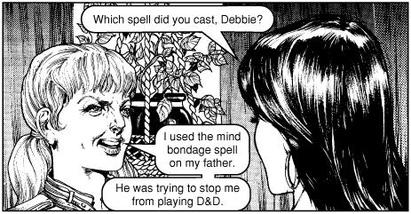 Is there a connection between playing D&D and Satanism? While the “Satanic Panic” of the 1980’s may have died down to some degree, a small portion of conservative and religious groups still believe that playing Dungeons & Dragons turns people into Lucifer’s servants of eeeeevil. When The Heavy Metal GM originally suggested that I conduct a study on table-top role-players, he suggested that I try to debunk this claim. I did a quick literature search and found that (sadly) there have not been many studies on table-top role players since the ‘80’s, but then I came across a study by Stuart Leeds in the 1995 edition of the Cultic Studies Journal addressing my original question. 1. The Question Leeds wanted to investigate whether or not the claims that Dungeons & Dragons caused Satanism and higher susceptibility to beliefs in the paranormal. Leeds administered a personality questionnaire assessing participants on psychoticism, extraversion, and neuroticism, a scale assessing belief in the paranormal, and another scale to measure participants’ involvement in gaming or Satanic practices. 2. The Sample He recruited 217 test subjects in total to participate in his study, and these were comprised of three groups. One hundred and twenty five participants were control subjects who were not dabblers in the occult nor players of table-top roleplaying games, 66 were players of RPGs, and 26 were Satanists and/or “occult dabblers” -- his definition of which is a liiiiitle bit wibbly wobbly, so bear with me. Participants ranged in age from 18 to 31, and were matched to controls by age, marital status, ethnicity, and highest level of education. The sample was 95% Caucasian and 100% of participants were male due to the “overwhelming preponderance of males in gaming and satanic practice groups.” 3. Stats And JUICY FINDINGS! Leeds used a one-way ANOVA (analysis of variance) to compute between-group differences on the personality and occult beliefs scales. 4. Finding #1: Spoilers: Gamers Aren’t Any More Psychotic Than Joe Non-Gamer Schmoe Participants in the Satanic dabbler group scored significantly higher on the psychoticism scale than the gaming group and the non-involvement group with a 95% confidence rate. (Just FYI 95% confidence means that there’s a 5% chance that the results are due to random chance, and this is usually the gold standard for significance in psych studies.) 5. Finding #2: Gamers Aren’t Introverts? Say What?! On the extraversion scale, there were no significant differences between the gamers and the controls, but the Satanic dabblers scored significantly lower on this scale than the other two groups. No significant differences between groups were found for the neuroticism scale. 6. Finding #3: Gamers Can Separate Fictitious Play From Reality!? WHO KNEW?! In terms of the belief in the paranormal, once again, gamers and non-gamer controls scored about the same as each other, and the Satanic dabblers scored significantly higher on this scale than the other two groups. So, in short, this study found that for white, mostly college-educated, young adult males, there are no differences in personality characteristics between gamers and non-gamers, and playing Dungeons and Dragons is not associated with increased beliefs in the occult. However, the results of this study should be taken with a small palm full of salt for a few reasons. However, 3 Reasons To Be Skeptical Of This Study 1. Sample Size The sample size is pretty low, but given that this project was probably a master’s thesis, I can’t really blame Leeds for not having funding/resources to get more participants. Because there are so few people in the Satanist group (and the definition is so weird), the variance within that group is limited, and we can’t prop them up as being representative of Satanists as a whole. Same deal goes for the gamers, albeit less so. It’s easier to get a significant result when sample sizes are smaller, so someone, somewhere down the line should try to replicate these results with larger samples from each group. 2. Generalizability Is IMPORTANT The sample might not be representative of gamers or Satanists or Joe Schmoes as a whole. I still have yet to see a comprehensive study on the demographic characteristics of table-top role-playing gamers, but there’s a lot of vague “well women don’t play so we’re not going to recruit them” bologna that seems to go on whenever someone decides to do a psychological study on this population. Same deal goes for race and ethnicity and geographic location (since all participants were from New York), and these criticisms also apply to the sample of Satanists. The results might not generalize to these populations as a whole, so getting a more diverse sample when replicating this would go a long way to lending more credibility to these claims. But this is a problem that occurs regularly within psychological and medical research and instead of going on for another five paragraphs about my biggest research pet peeve I’ll let you go do some digging on your own. 3. Do You Even Have Power, Bro? The correlations they found for the personality factors were pretty small (generally anything between .1-.3 is considered a small correlation, .4-.6 is medium, and .7-.9 is large) which is to say that while the results are significant (read: probably not due to chance), belonging to any one of these groups probably doesn’t have much influence on personality. So, there you have it folks! Next time Uncle Jim tries to get on your case about being an obedient servant of the devil because you play D&D or that you must be some kind of social pariah, you can show him this study and proclaim with the power of SCIENCE that this is simply not the case. FancyDuckie is a 20-something researcher by daylight, and mahou shoujo cosplayer by moonlight! She’s also known to play murder hobo elven clerics with a penchant for shanking twice a week. Also known as “science girlfriend” of The Heavy Metal GM. When she’s not chained to her sewing machine or doing other nerdy stuff, she enjoys watching ballet, musical theatre, pro hockey, and playing with any critter that will tolerate her presence. You can find her on Twitter, Tumblr, Cospix, ACParadise, Facebook, Instagram, & Wordpress. Citation Leeds, S. M. (1995). Personality, belief in the paranormal, and involvement with Satanic practices among young adult males: Dabblers versus gamers. Cultic Studies Journal, 12, 2, 148-165.  Like any non-renewable resource, gaming time is precious - time-consuming table-top RPG sessions even more so. My own Rifts group can barely afford 2-3 games a month, always on a weeknight and usually lasting only 4 hours or so. It can really cramp a well-planned adventure’s style. But don’t worry - these tips will help to prune away the time-wastery and get your all-too-brief games working on minimal schedules for maximum fun! 1. Write A Half-Assed Screenplay A real screenplay would be ridiculous, since you’re writing it for what amounts to a game of directed improvisation. However, this shouldn’t stop you from formulating what screenwriters call beat sheets - the major events that need to happen to progress the plot, regardless of what happens in between. Screenwriters have the luxury of knowing precisely what’s going to happen on every page, but you don’t. BEAT SHEET - GHOSTBUSTERS - ENCOUNTER: Library Ghost Discovery! - Go Into Business For Ourselves - ENCOUNTER: Trap Slimer! - EPA Investigation - That’s A Big Twinkie - Ghosts Busted (Out) - All Hell Breaks Loose - ENCOUNTER: Final Battle with Gozer! Doesn’t look like a full-length movie, right? In a game, the Ghostbusters could leave the university on their own terms instead of being thrown out (although to be fair, being thrown out is a classic adventurer move), Tully could be hit by a car fleeing the Terror Dog across Central Park West if he’d rolled a 1, and Venkman doesn’t necessarily have to date Dana (especially with a pocketful of tranquilizers, dude). It wouldn’t be as incredible as the actual plot of Ghostbusters, of course. But none of those extra events need to be there to affect the beginning, middle, and end. It’s a good rule of thumb for any open-ended adventuring. 2. Turn Sidetracking Into Fast Tracking Dilly-dallying (very technical terminology here, try to keep up) and other in-game sidetracking can be neatly twisted into furthering the plot, as long as you can think on your feet. Maybe that brawl Hrothgar the barbarian starts in the royal antechambers before the group even meets with the queen results in getting thrown out (it’s a classic for a reason) - but not before a courtier slips a note into Hank the wizard’s pocket to meet at a nearby inn. Perhaps the mission has simply become clandestine, or maybe the party is now answering to a would-be usurper of the throne instead of the queen? You can use these unexpected developments to get you to the next beat. 3. Know When To Quit Deadlines put a real pressure on efficiency and pacing, which can turn a well-crafted story into a headlong rush to finish the game by the time limits imposed by kids, spouses, or early shifts the next day. Two-parters or multi-session campaigns are another option. But with any discrepancies in your player turnout, it can get disjointed - and besides, no one enjoys being left out. By establishing your beats, you can cut whatever you need to in order to get to the end, but be prepared that sometimes it’s still going to result in fudging the boss battle just to finish on time. Do yourself and your players a favor, and embrace the two-parter when you have to. A cliffhanger is always better than a lame ending. If you decide in advance it’ll be a two-parter, you’re better able to end the night on a high note. 4. Accept Your Fate Sometimes a planned story just doesn’t work out at all. But that doesn’t have to be a bad thing! Some of the best games I’ve run have been completely off the rails. I once had a group of Rifts characters go to a post-apocalyptic city-state to prevent an assassination due to take place at a public ceremony. The players decided that the best way to do this was to prevent the ceremony from taking place at all, and spent the entire session pitting rival street gangs against each other, reasoning that an all-out turf war would put a halt to the event and thus fulfill their objective. It was loads of fun, even if we never got to a single beat that I had planned! Improv is the name of the game for a GM, and it’s important to recognize that and run with it. Hopefully you can take these tips and put them to work for you. If you don’t need to worry about time, then by all means go ahead and enjoy your bizarre un-cramped lifestyle. Also, please let me know the name of the self-sufficient paradise island you live on. For the rest of us, we do the best we can with what we have. Keep rolling those dice and most importantly, have fun! Brett Caron is a freelance writer and author. He’s a regular contributor to Palladium Books, writes for the Huffington Post on occasion, and has released 2 eBooks with Trese Brothers Games (on sale now). You can follow Brett on Twitter and Instagram at @brettcaron. |
All blog materials created and developed by the staff here at High Level Games Archives
April 2023
Categories
All
|
Proudly powered by Weebly
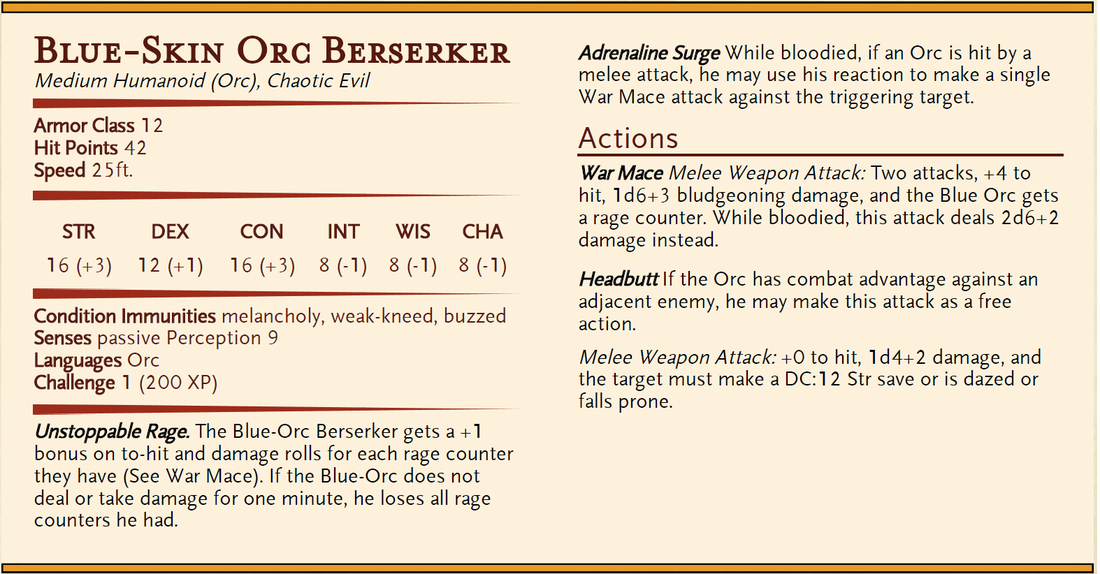
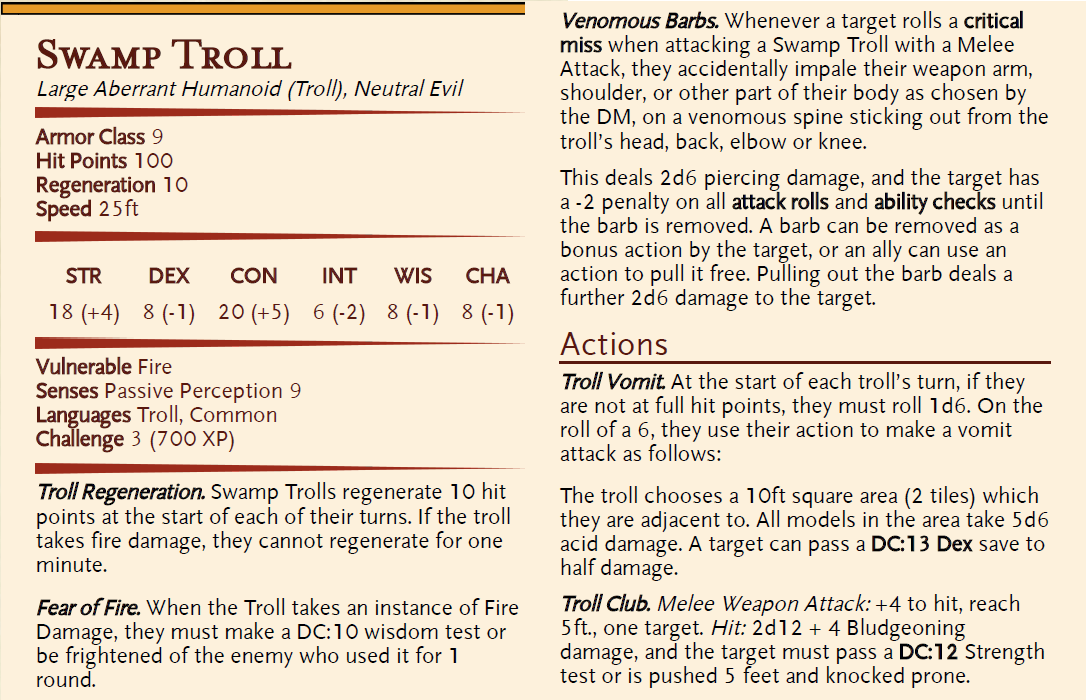
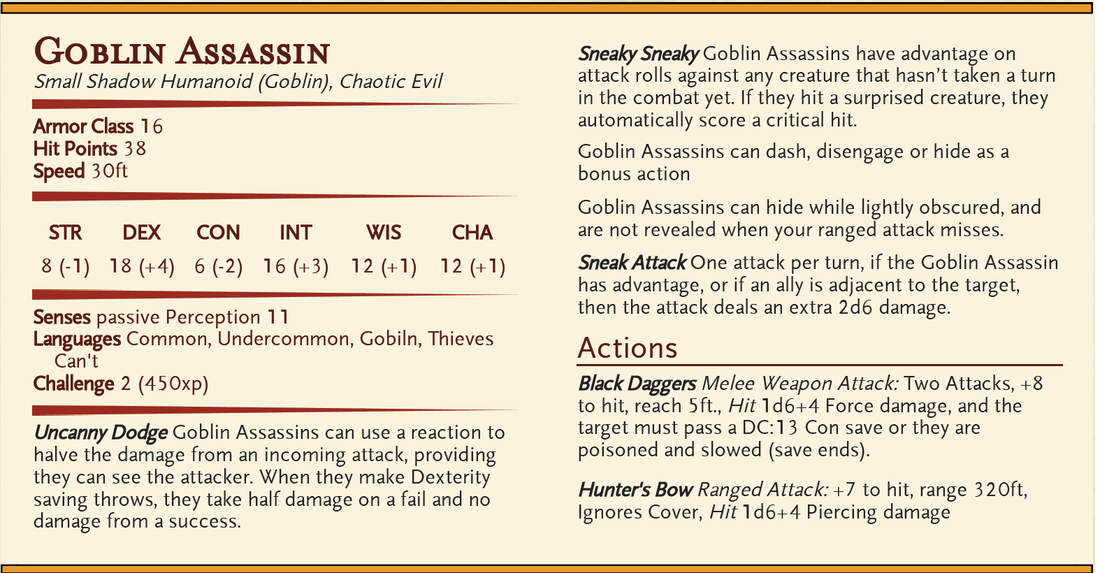
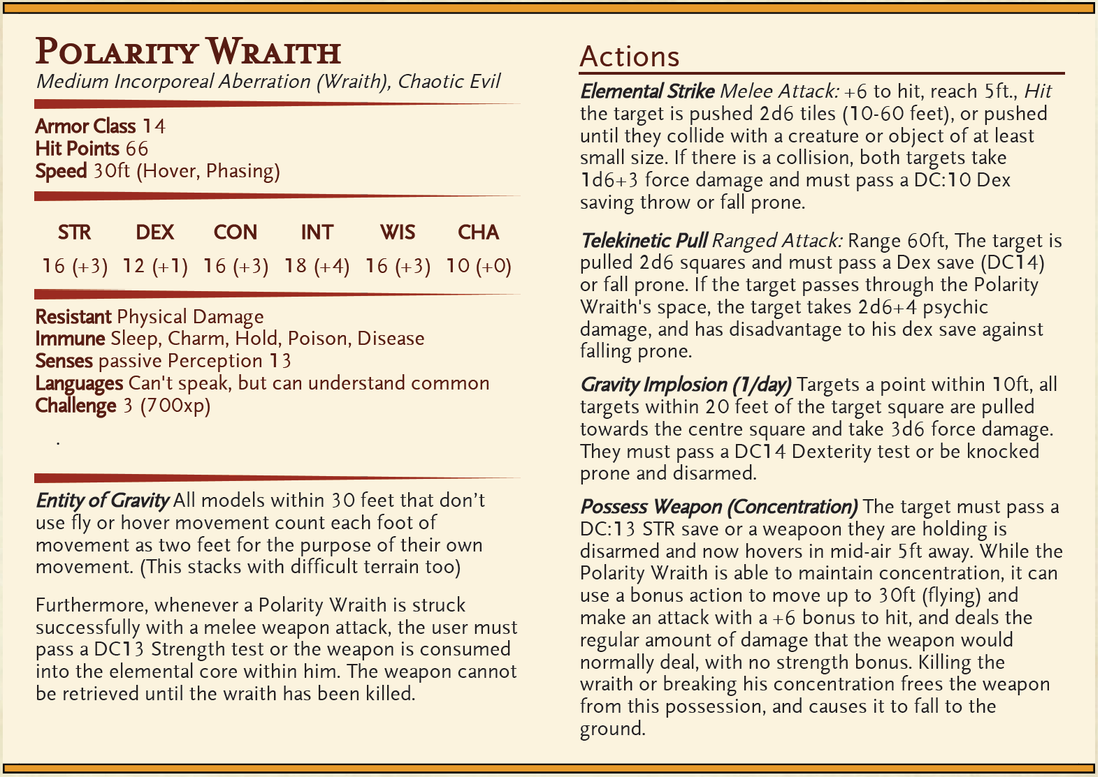
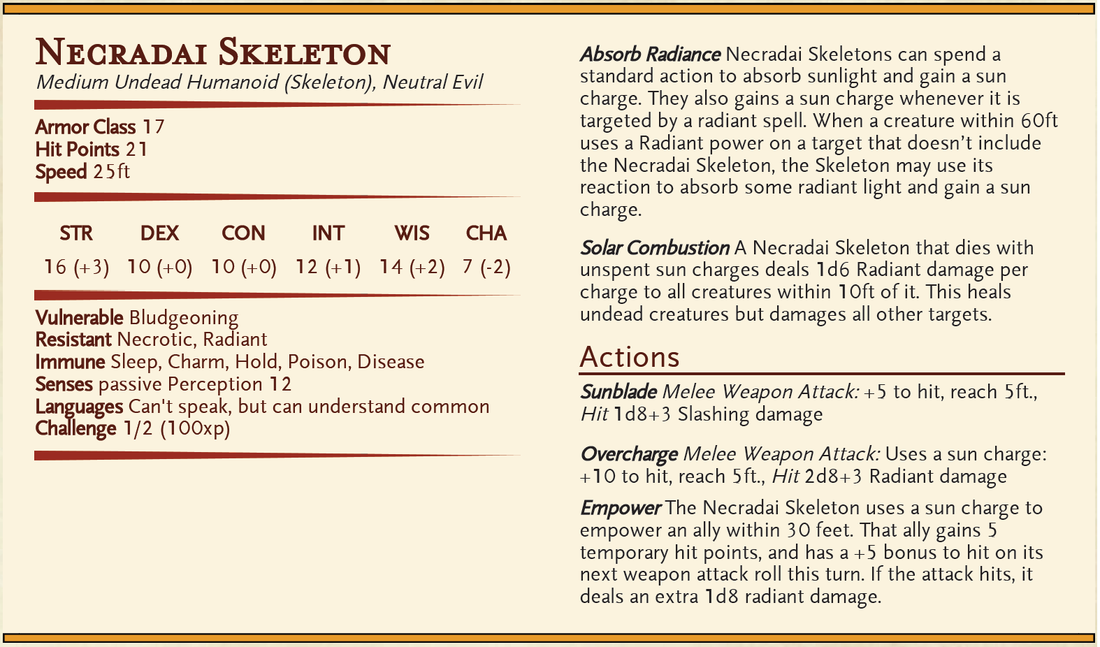
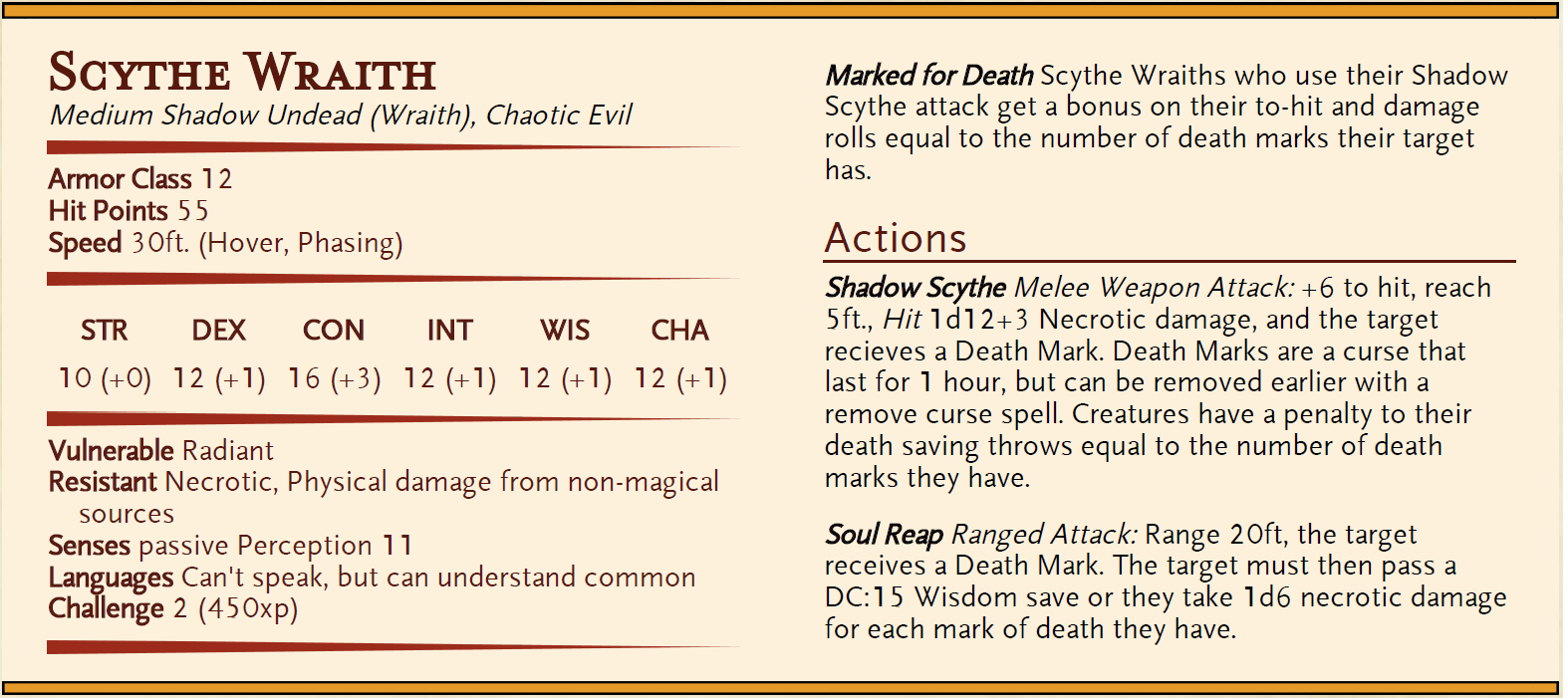
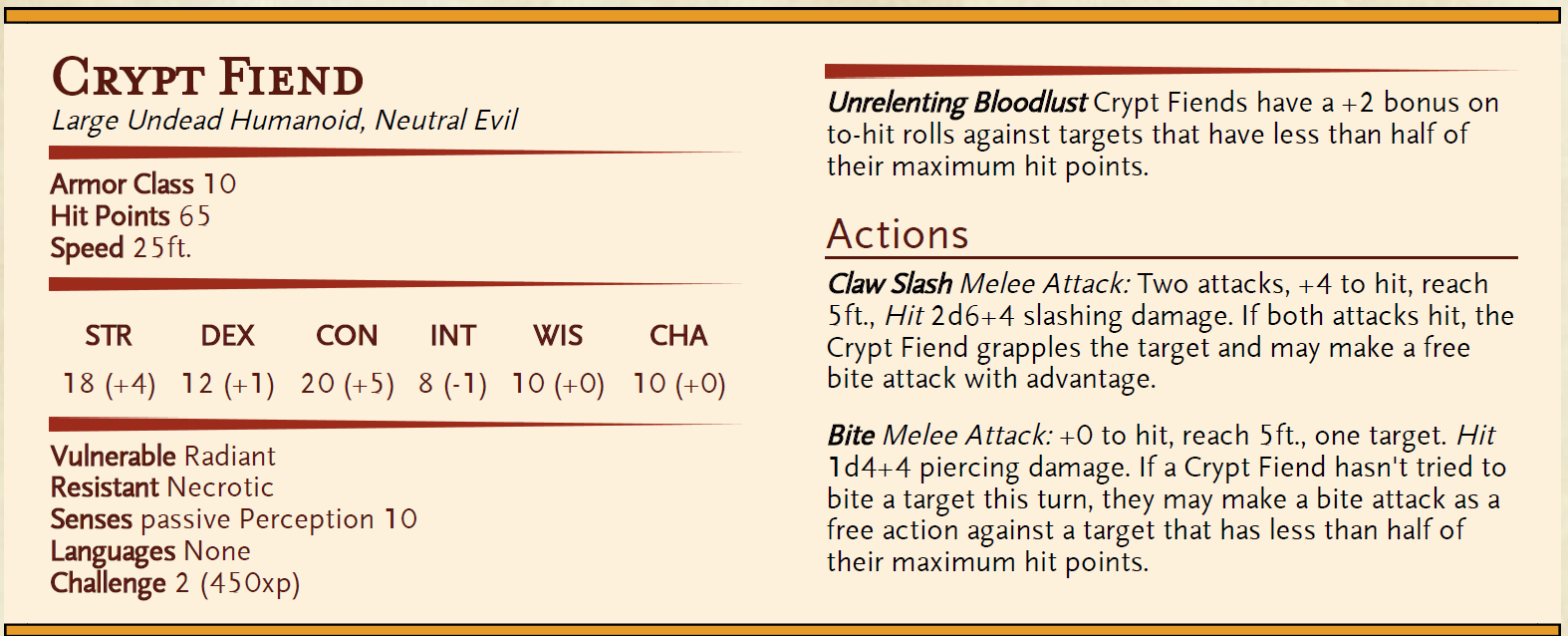

 RSS Feed
RSS Feed